2023 Wood Materials Engraving in Traditional Chinese Handicraft Materials research achievements release
「木与雕版」是中国传统材料之木材料研究计划继「木的切割」、「木的染色」、「木与大漆」之后的第四个研究主题,由感物以木材料专家的身份独家支持融设计图书馆,并共同参与研究,从“板-雕-版-印”四部分解构雕版的制作过程,探索雕版在当代设计中的可塑性。
"Wood and engraving" is the fourth research topic of the Wood Materials Research project of traditional Chinese materials after "Wood cutting", "Wood dyeing", and "Wood and lacquer". The Ugan concept exclusively supports the Rong Design Library as a wood material expert and participates in the research. Deconstruct the production process of engraving from the four parts of "Board-carving-plate-printing" and explore the plasticity of engraving in contemporary design.

Traditional "copying"technology
在雕版出现之前,信息的传播主要依靠手抄文本,费时且昂贵,对准确度也极高要求。雕版的出现,代替手抄成为传统的“复印”媒介,让图与像的转换变得更加高效,书籍、画像等等传播效应随之提升。雕版,使人们对图像和文字大量复制的需求被满足,是推动文化传播的重要媒介,是传统手工艺推动人类精神文明发展的典范。
Before the advent of engraving, the dissemination of information mainly relied on hand-copied texts, which was time-consuming and expensive, and required extremely high accuracy.The emergence of engraving has replaced hand-copying as the traditional "copying" medium, making the conversion of pictures and images more efficient, and the dissemination effect of books, portraits, etc. has increased.Engraving has satisfied people's demand for large-scale reproduction of images and texts. It's an important medium for promoting cultural dissemination and a model for traditional handicrafts to promote the development of human spiritual civilization.
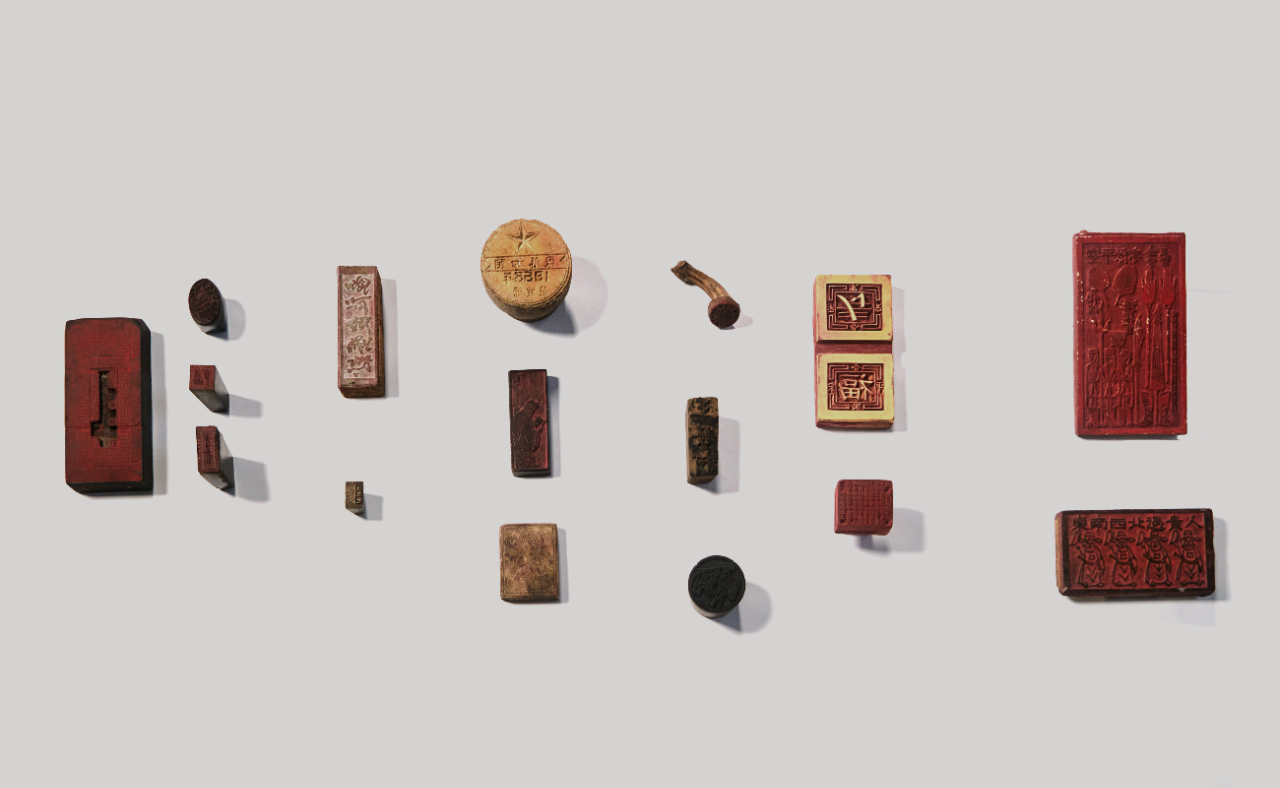
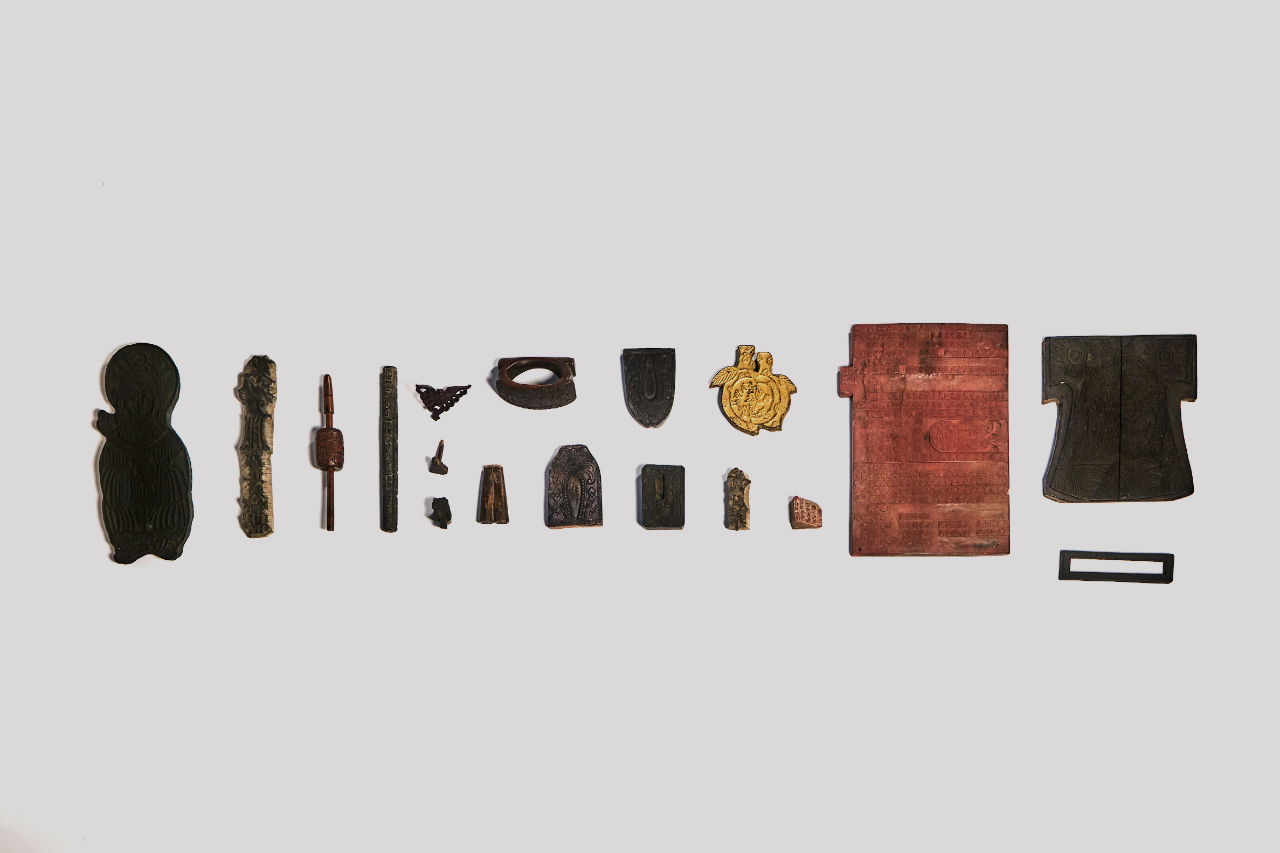
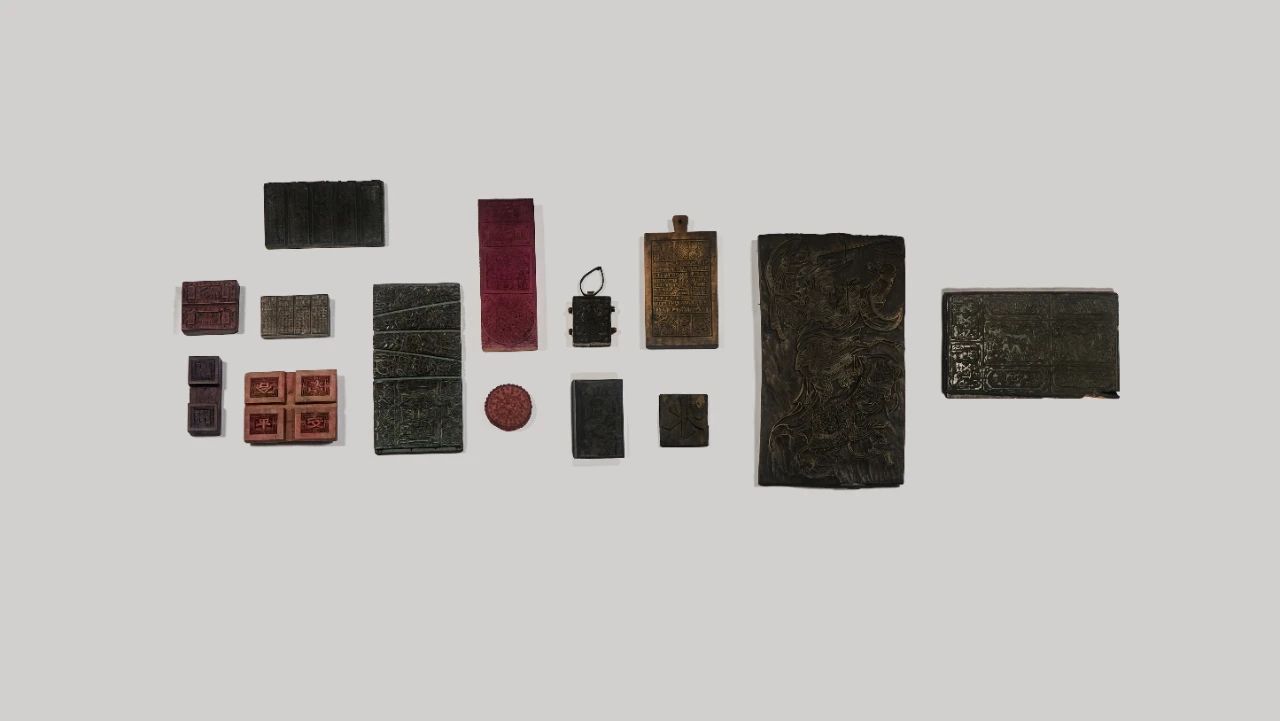
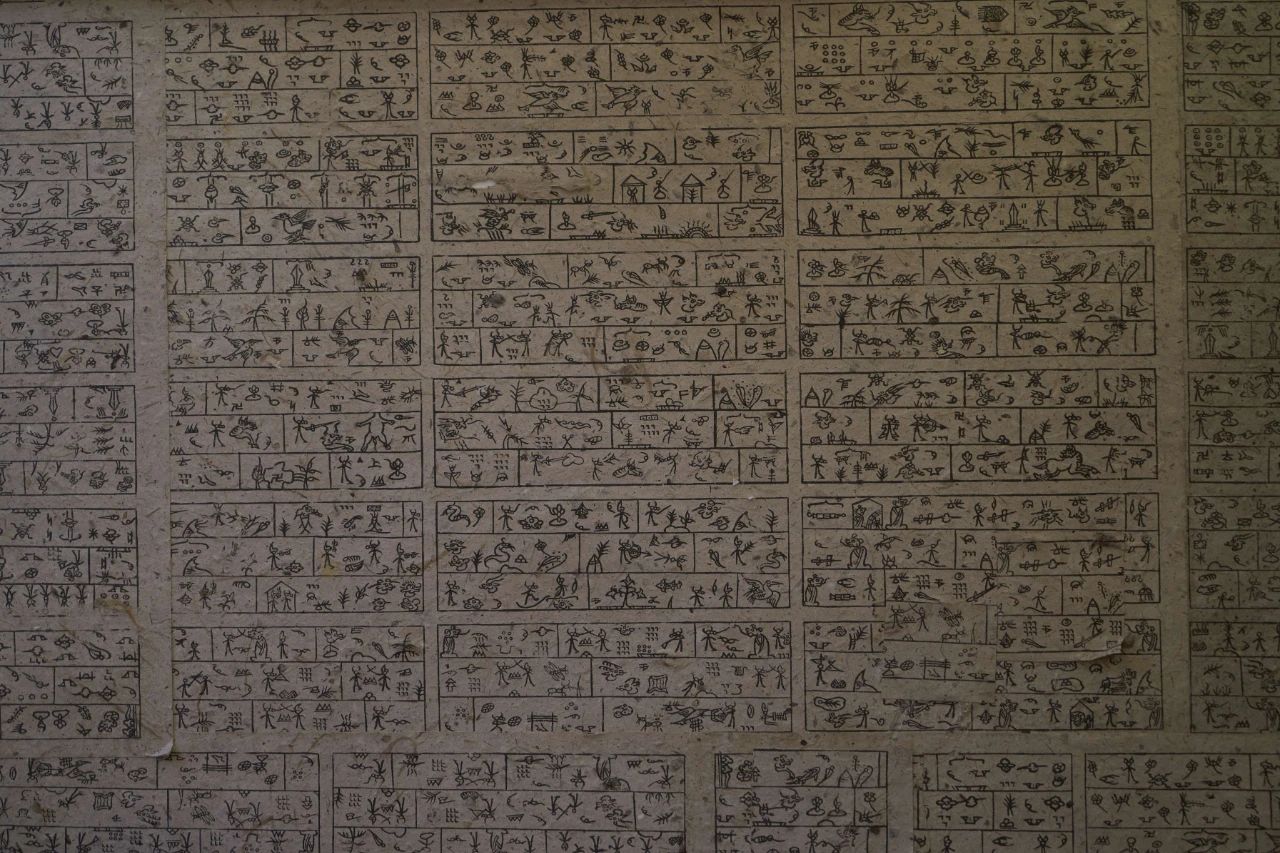
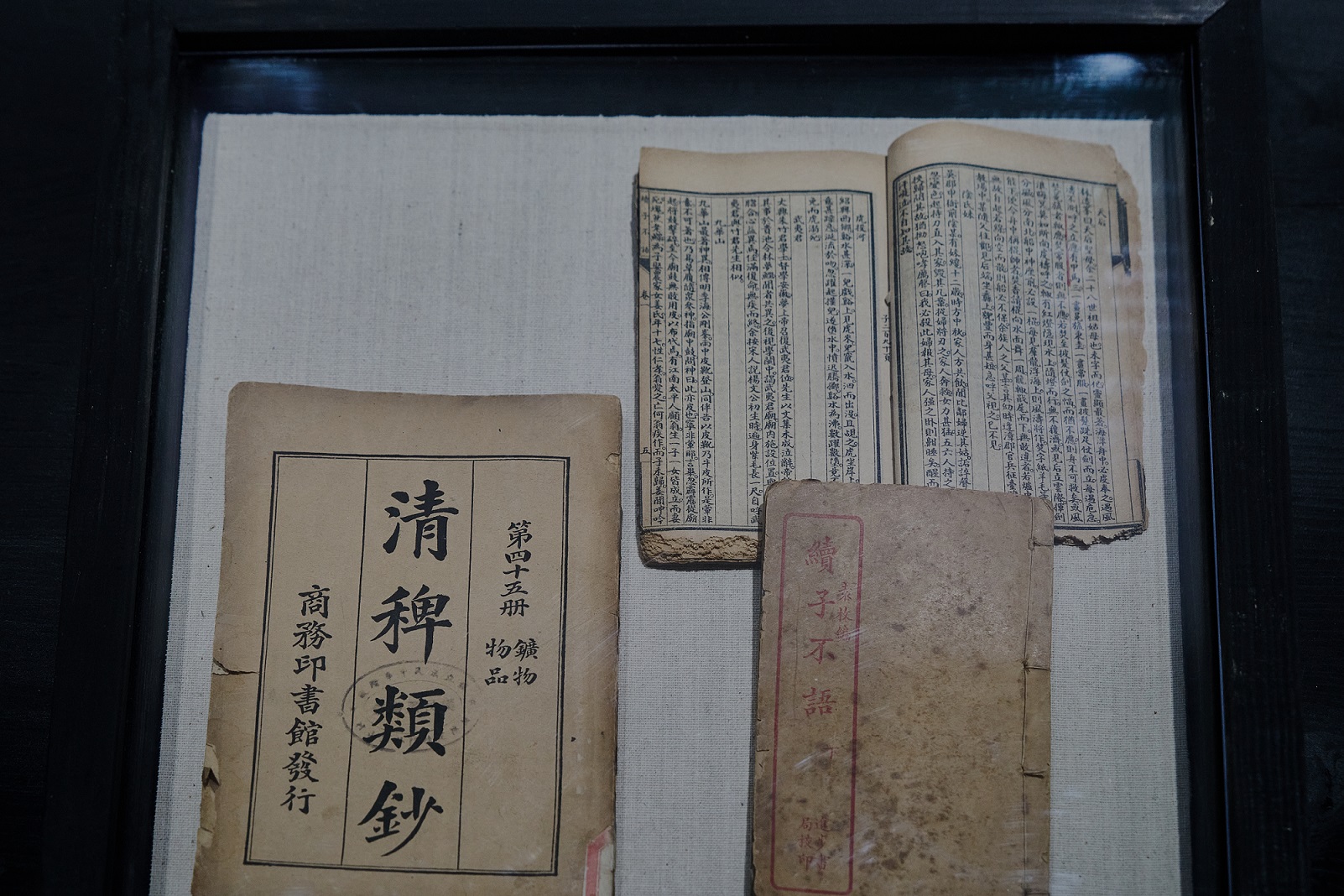

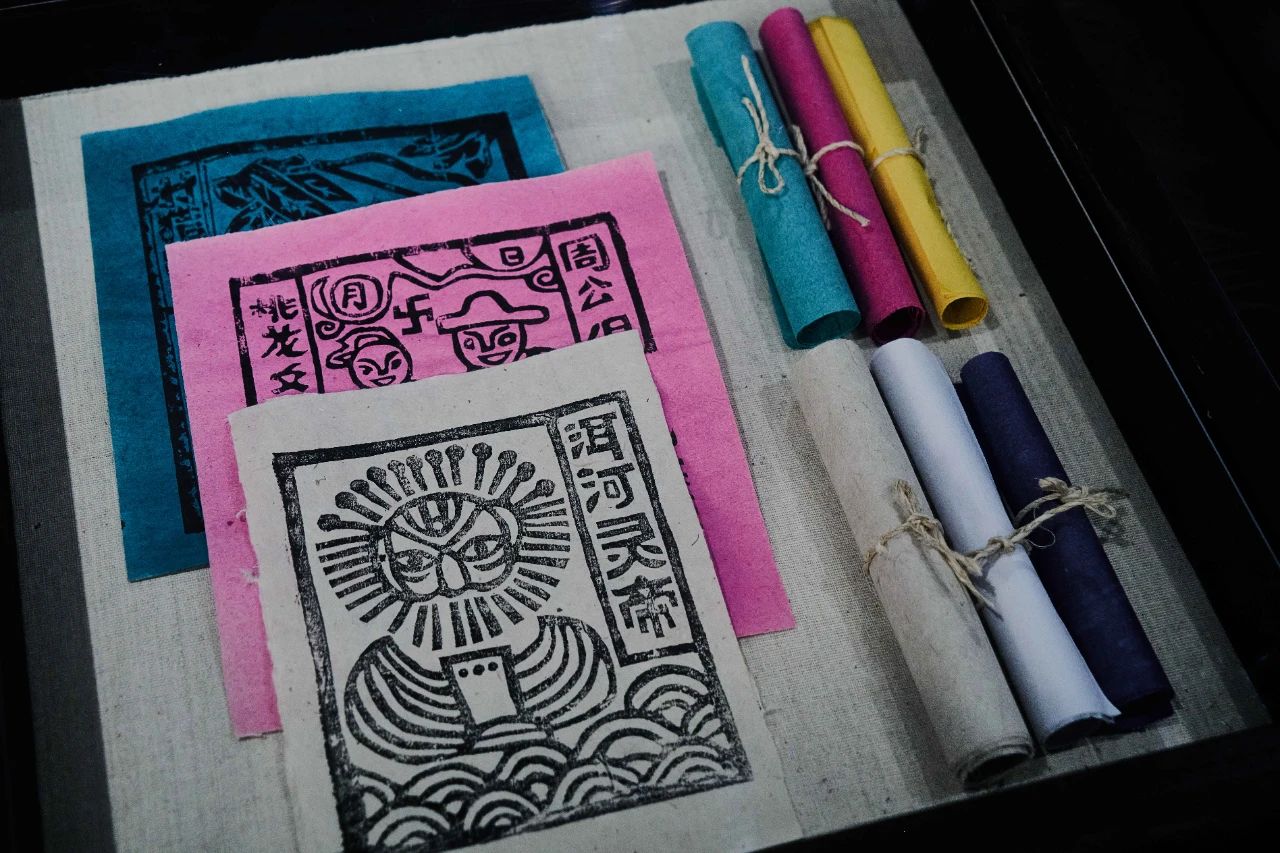
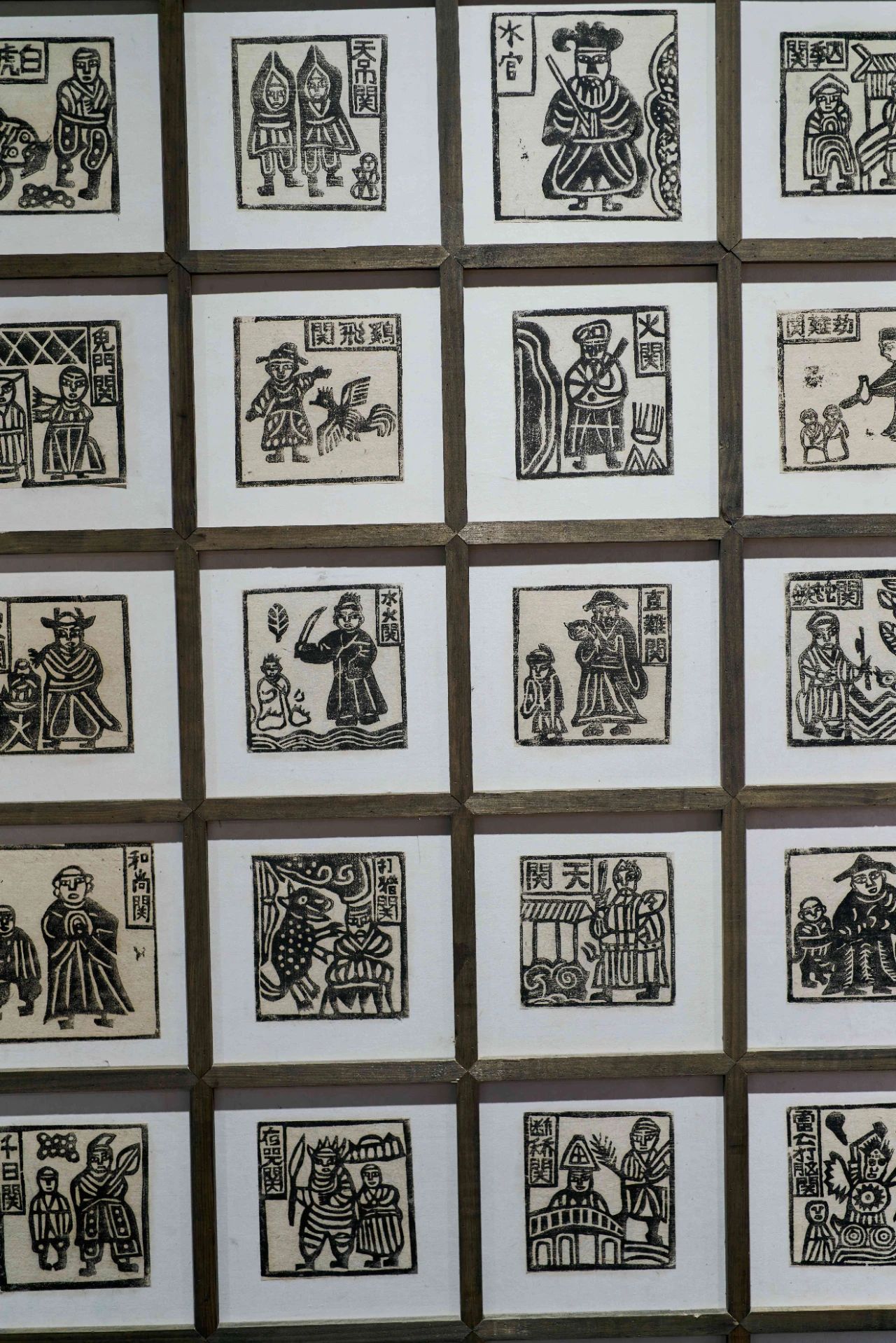

这次,感物团队与融设计图书馆团队以「木与雕版」为研究主题,探访全国多地进行考察。
This time, the Ugan concept team and the Rong Design Library team visited many region across the country with "Wood and engraving" as the research theme.
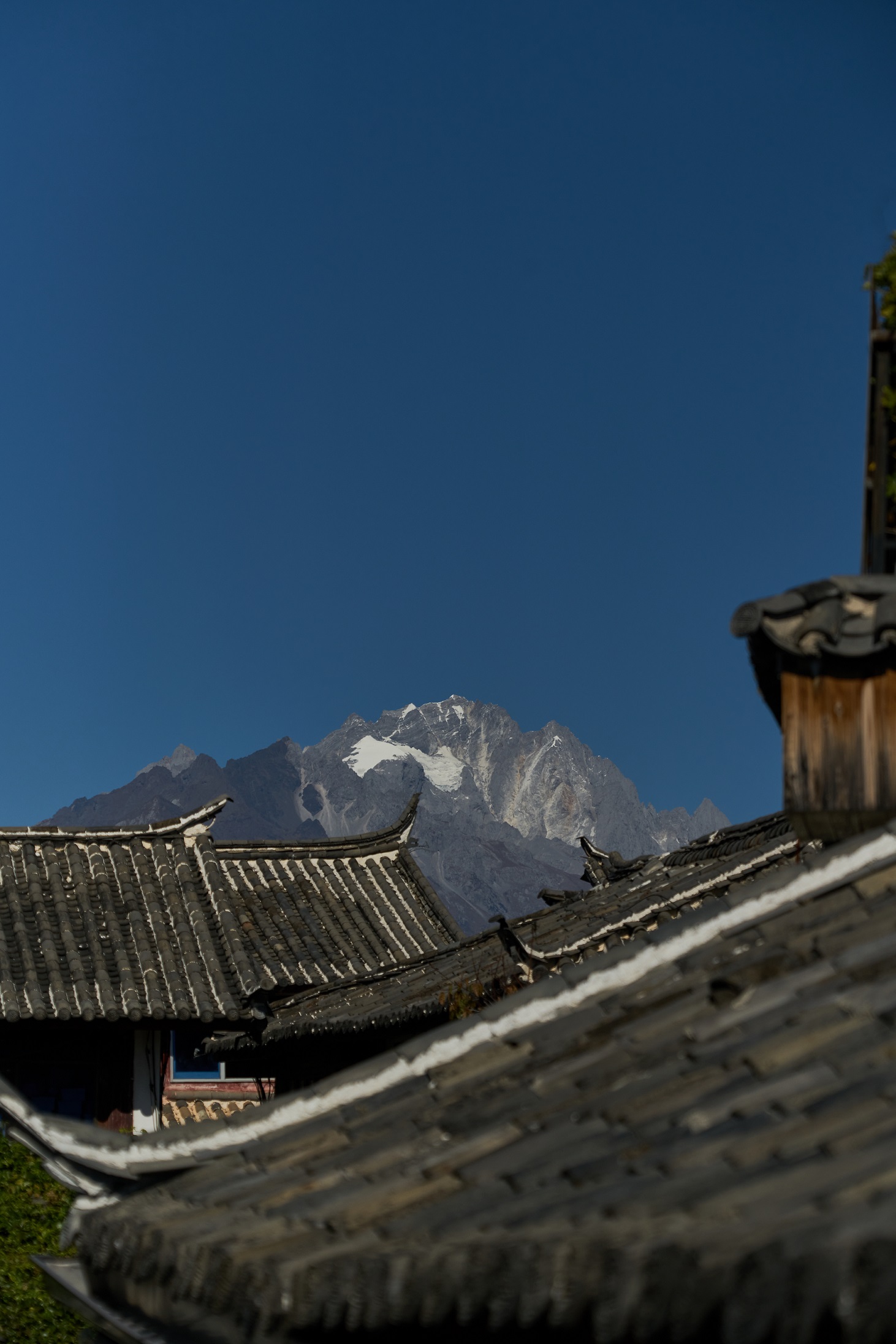
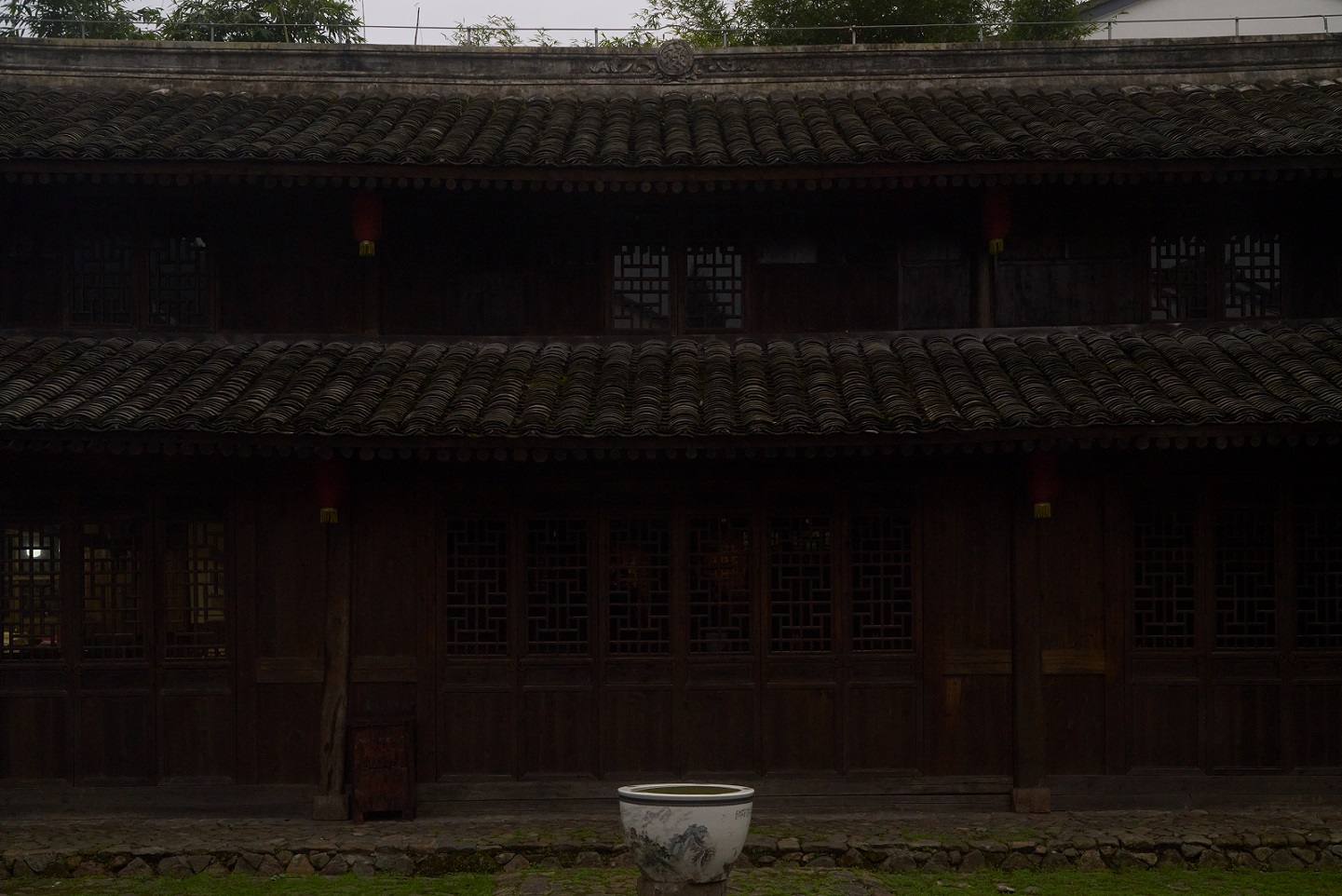
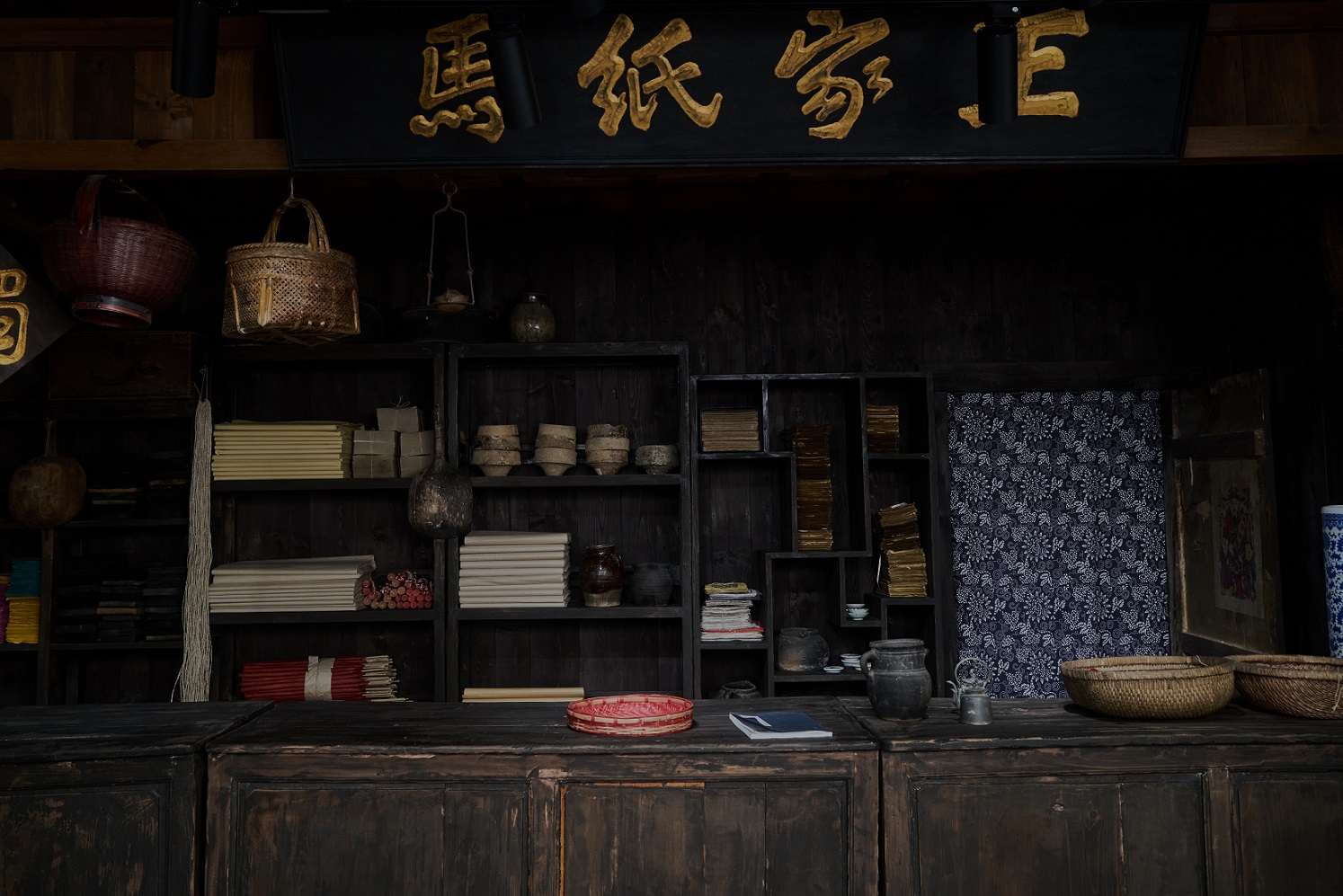
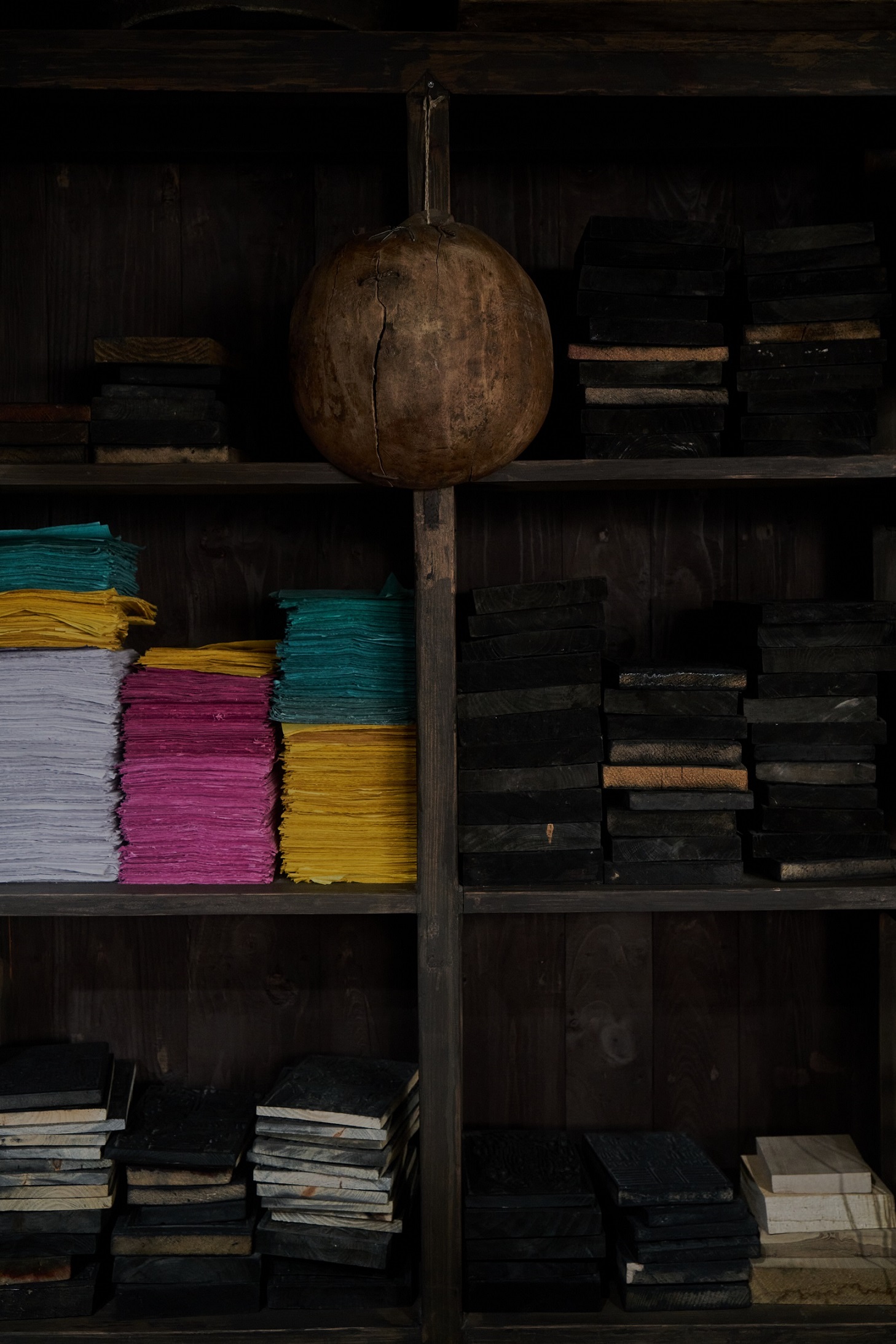
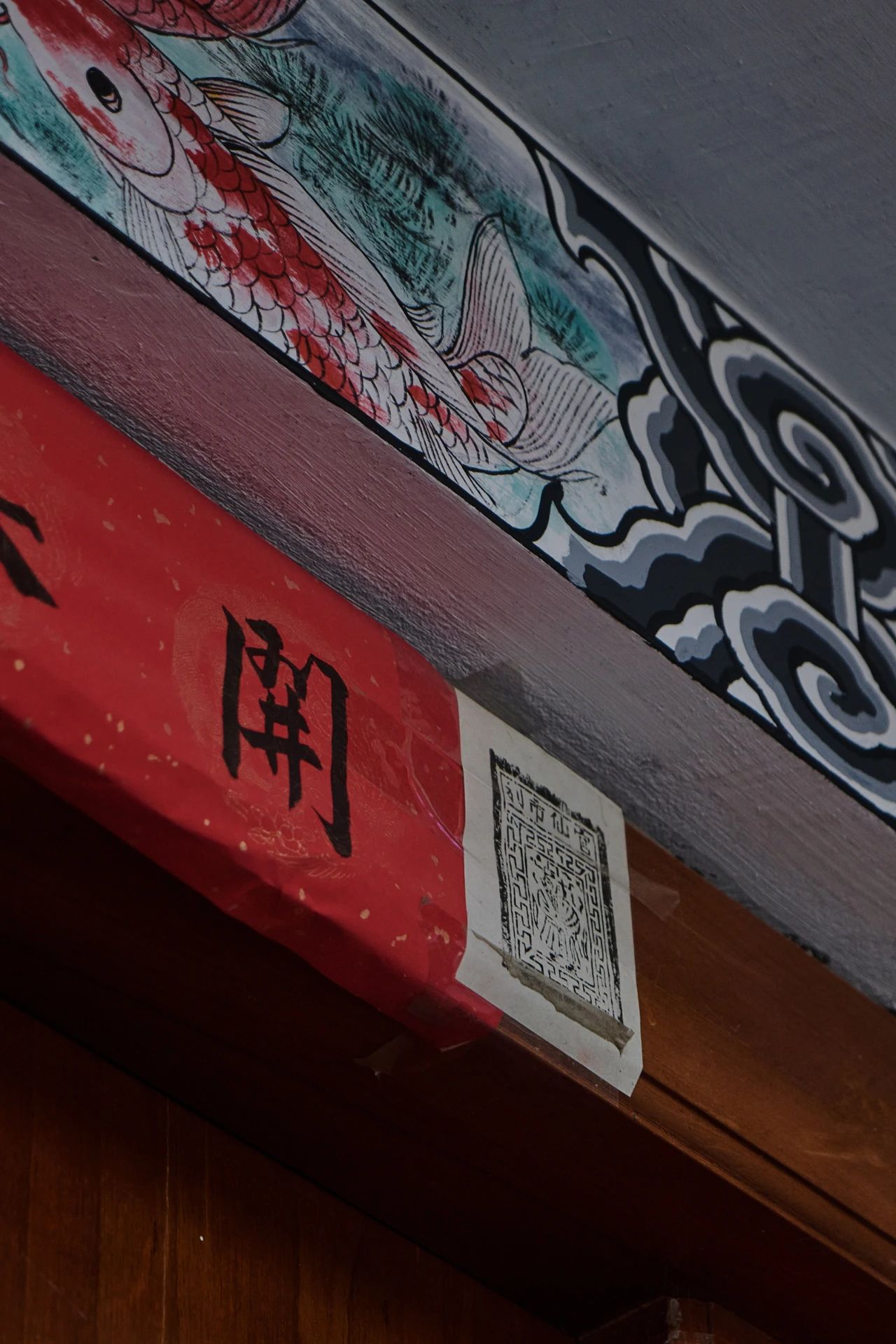
考察中发现雕版主要有三个转变组成:由“材”到“板”,从“板”到“版”,以“版”到“印”,先对原材料预处理后进行雕刻,待雕刻完成后再转印的过程。根据板材变化与处理工艺可归纳为“板-雕-版-印”四部分。
During the investigation, it was found that there are three main changes in engraving: from “material” to “board”, “board” to “version”, “version” to “printing”, the raw materials are first pretreated and then engraved, and then the process of transfer is completed after the engraving. According to the changes in the plate and the processing technology, it can be summarized into four parts: “board-carving-plate-printing”.
板
一块好的木雕版是可以一直流传的,所以对于选材就非常讲究,要求质地均匀、纹理细密、不易翘裂,常见会有梨木、黄杨木、椿木、枣木、水曲柳、银杏木、桦木等。
A good woodcarving plate can be circulated all the time, so it is very particular about the selection of materials, requiring uniform texture, fine texture, and not easy to crack. There are common pear wood, boxwood, toon wood, jujube wood, mandshurica, ginkgo wood, birch and so on.
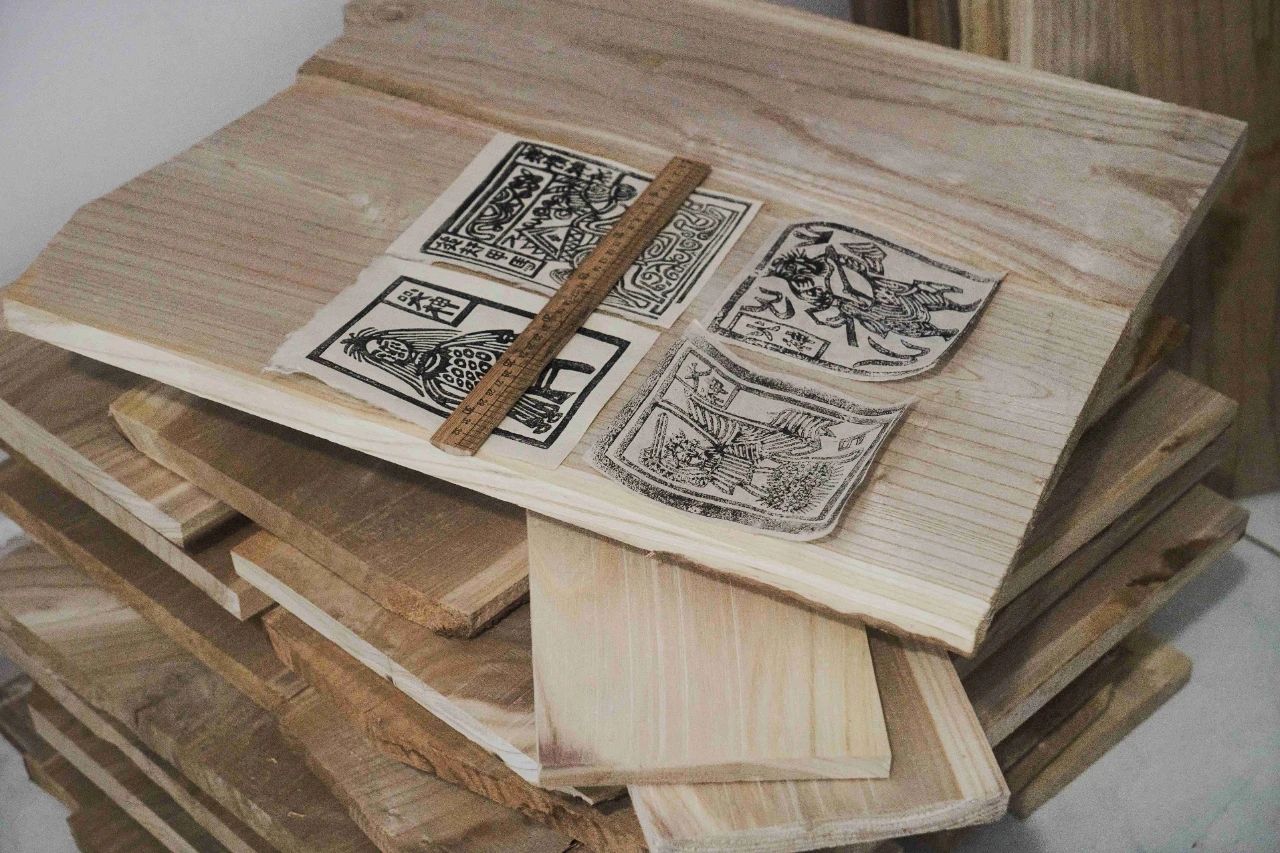

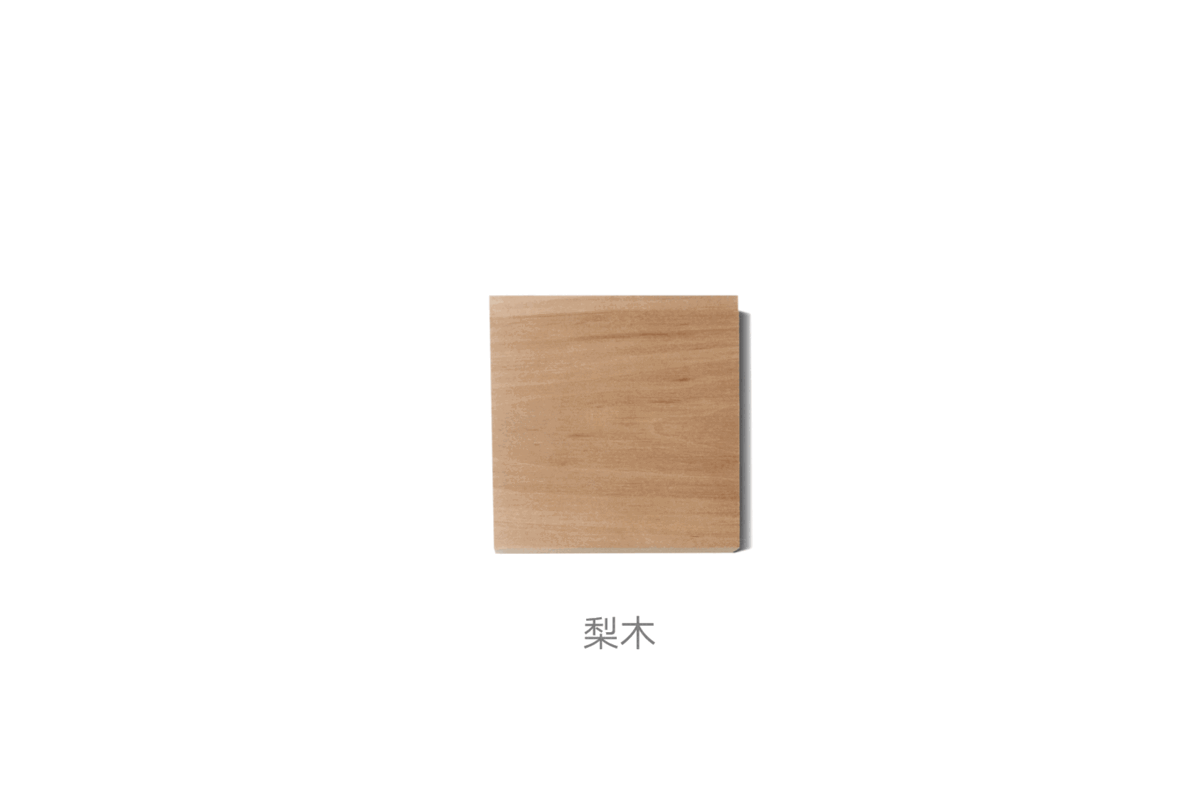
为了使板材更稳定,需要对其进行预处理。从裁切和去皮开始,师傅会根据不同木块的特性和结构切割成所需的尺寸,通过浸泡、蒸煮、阴干等方式,使其易于保存,例如浙南地区的蓝夹缬工艺,会将选好的木材浸泡在水里达到稳定的效果。刨平后打磨成光滑的表面,方可进行下一步雕刻。
In order to make the sheet more stable, it needs to be pretreated.Starting from cutting and peeling, the master will cut into the required size according to the characteristics and structure of different wood blocks, and make them easy to preserve by soaking, cooking, and drying. For example, the blue Jiaxie process in southern Zhejiang will soak the selected wood in water to achieve a stable effect.After planing, it is polished to a smooth surface before the next step of engraving can be carried out.
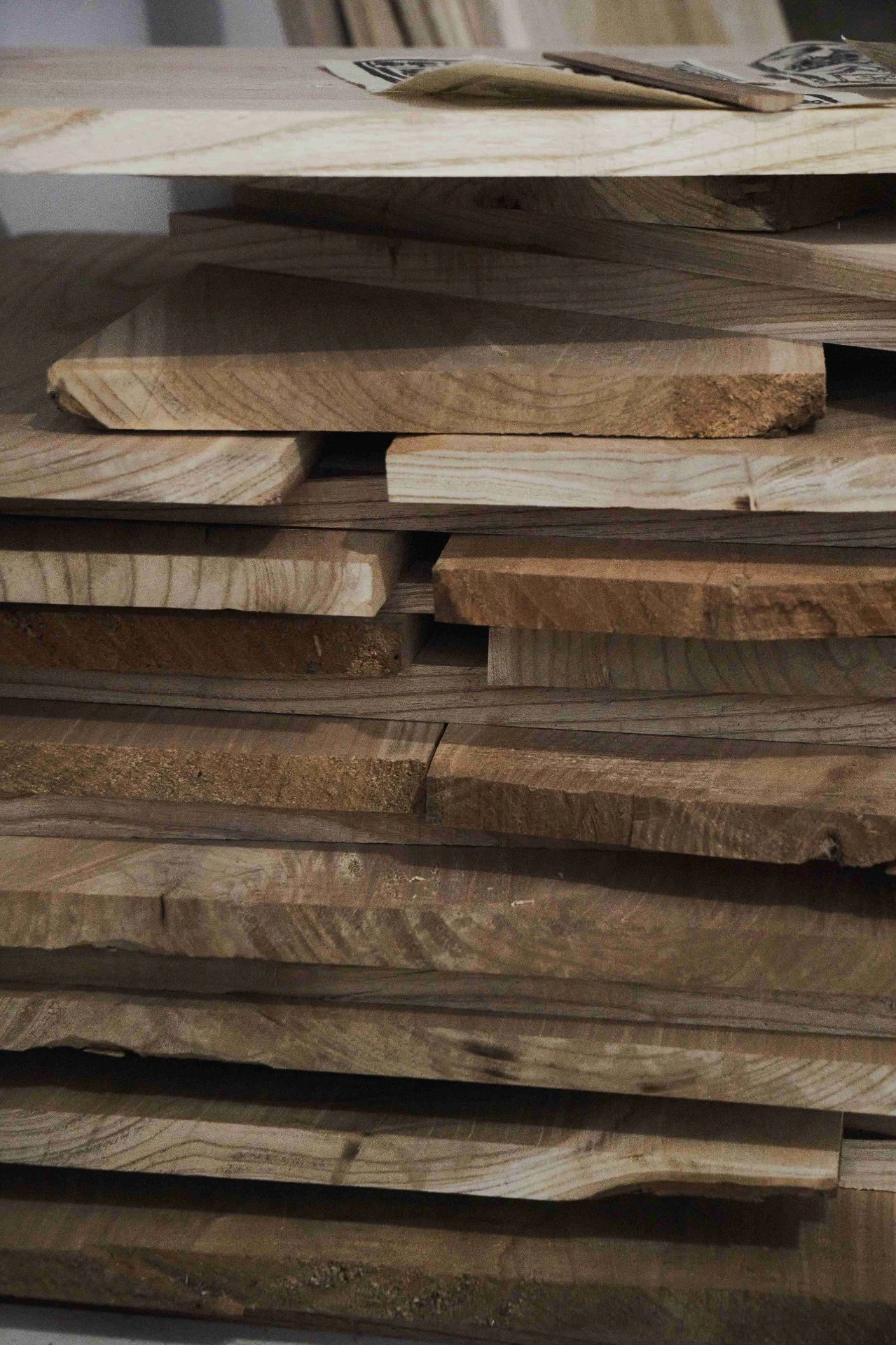
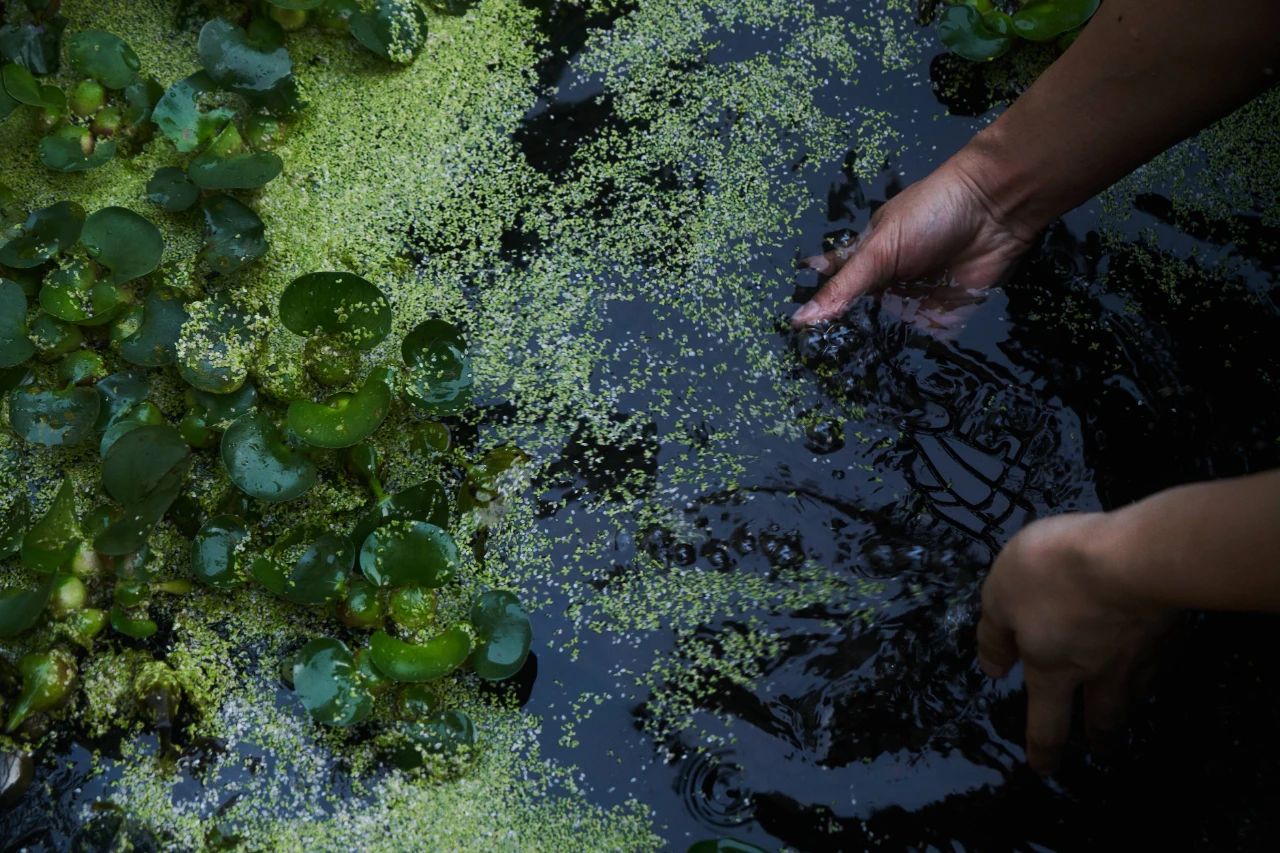
雕
雕,是雕版技艺性的集中体现。手艺人在雕刻前会先上样,上样分为直接上样、覆纸上样两种,像木活字就是直接上样,先用毛笔直接在小木块上写上所需文字然后进行雕刻,而有的则是需要完成起稿后,在表层刷上浆糊,将最终图案的纸样反贴于板面再进行刻板。
Carving is a concentrated manifestation of the craftsmanship of engraving. Craftsmen first apply samples before carving, which can be divided into two types: direct sample application and paper coated sample application. For example, for wooden movable type, direct sample application involves writing the required text directly on a small wooden block with a brush before carving. For others, after completing the draft, paste is applied to the surface, and the final pattern of the paper is pasted onto the board surface before engraving.
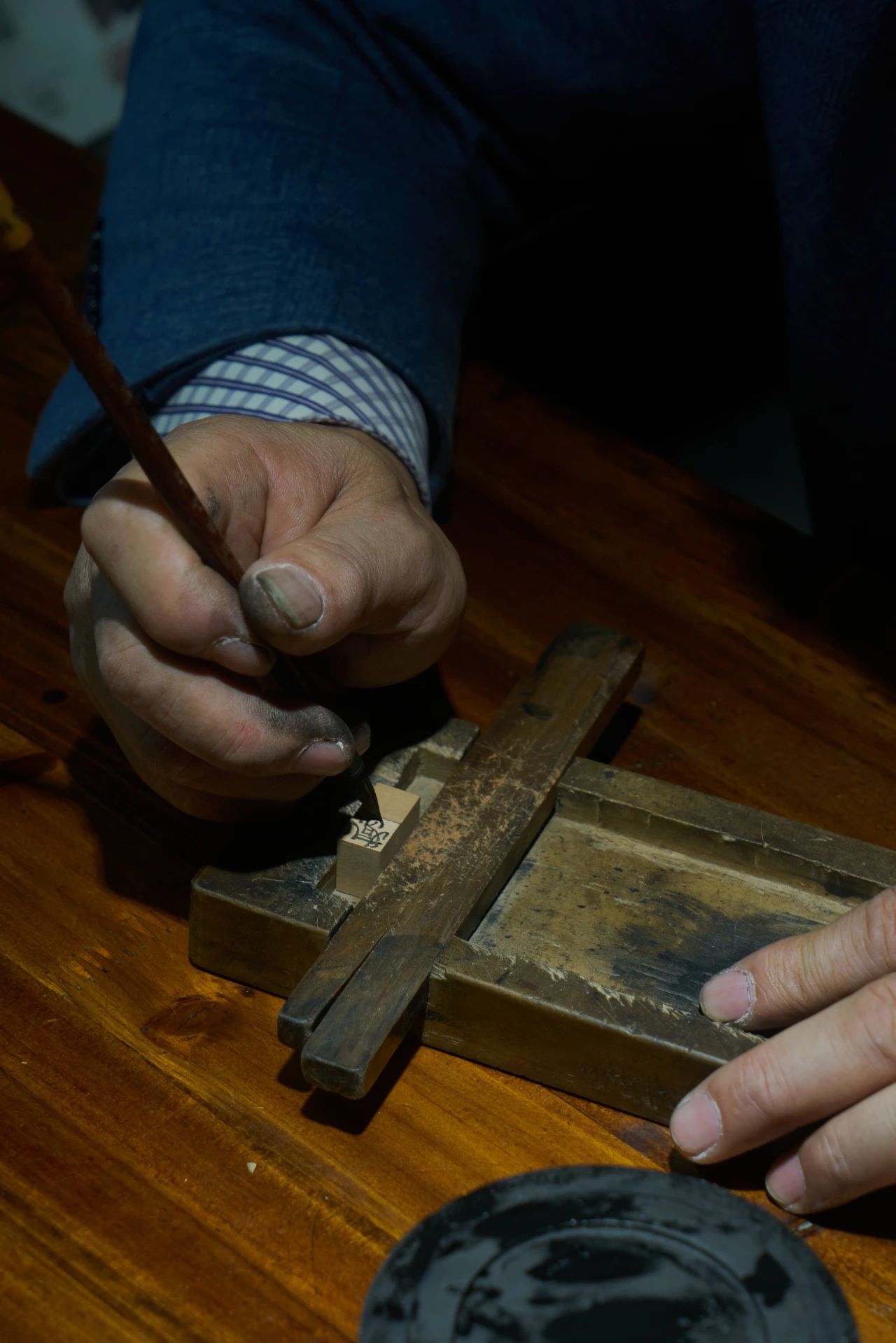
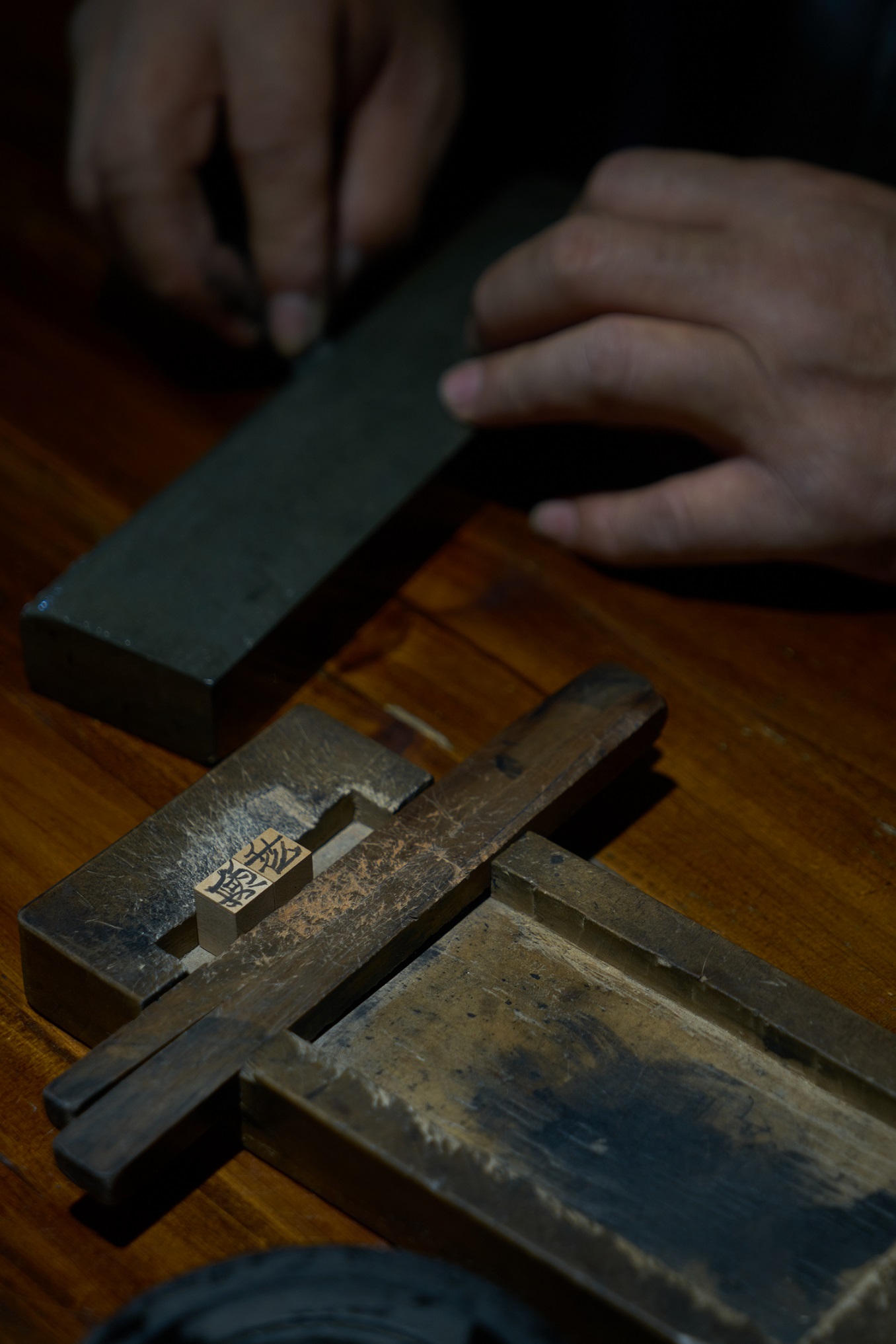
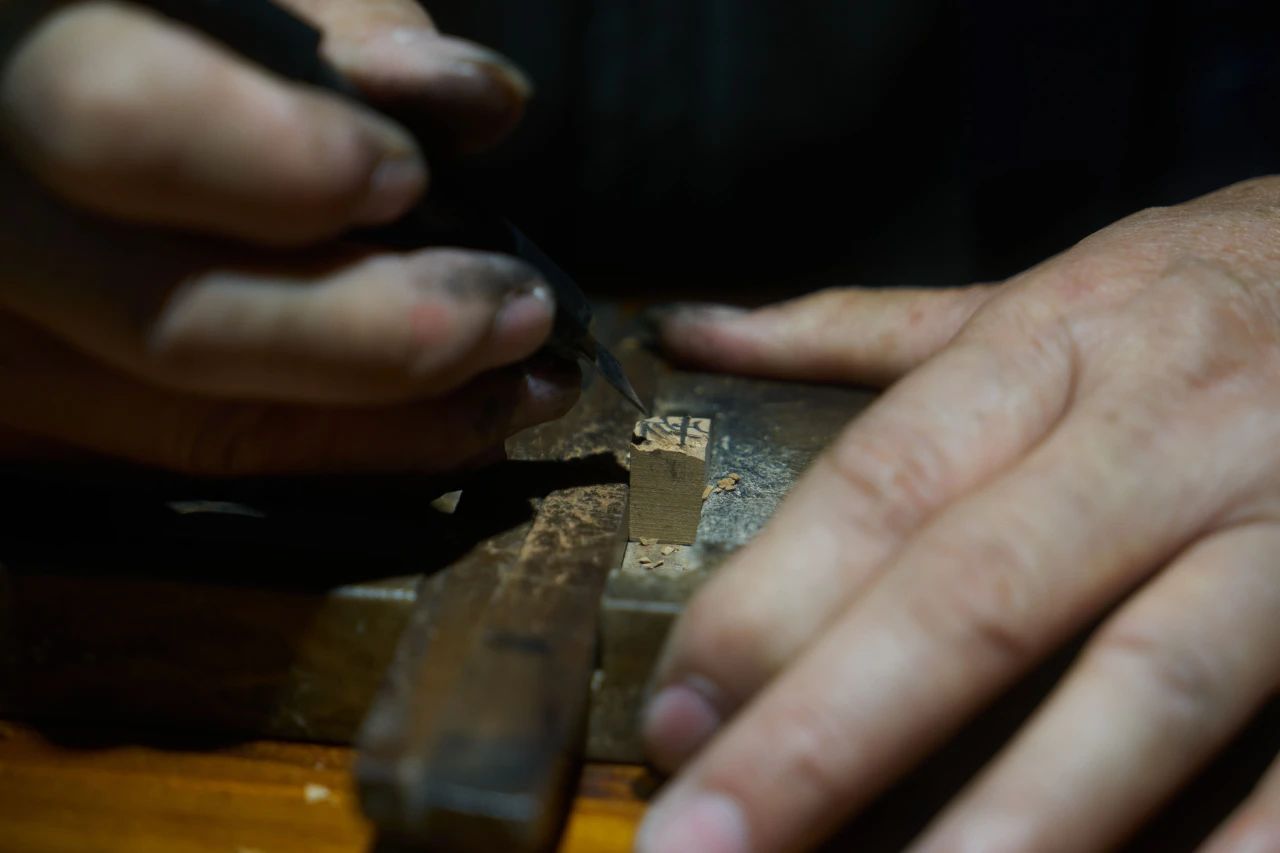
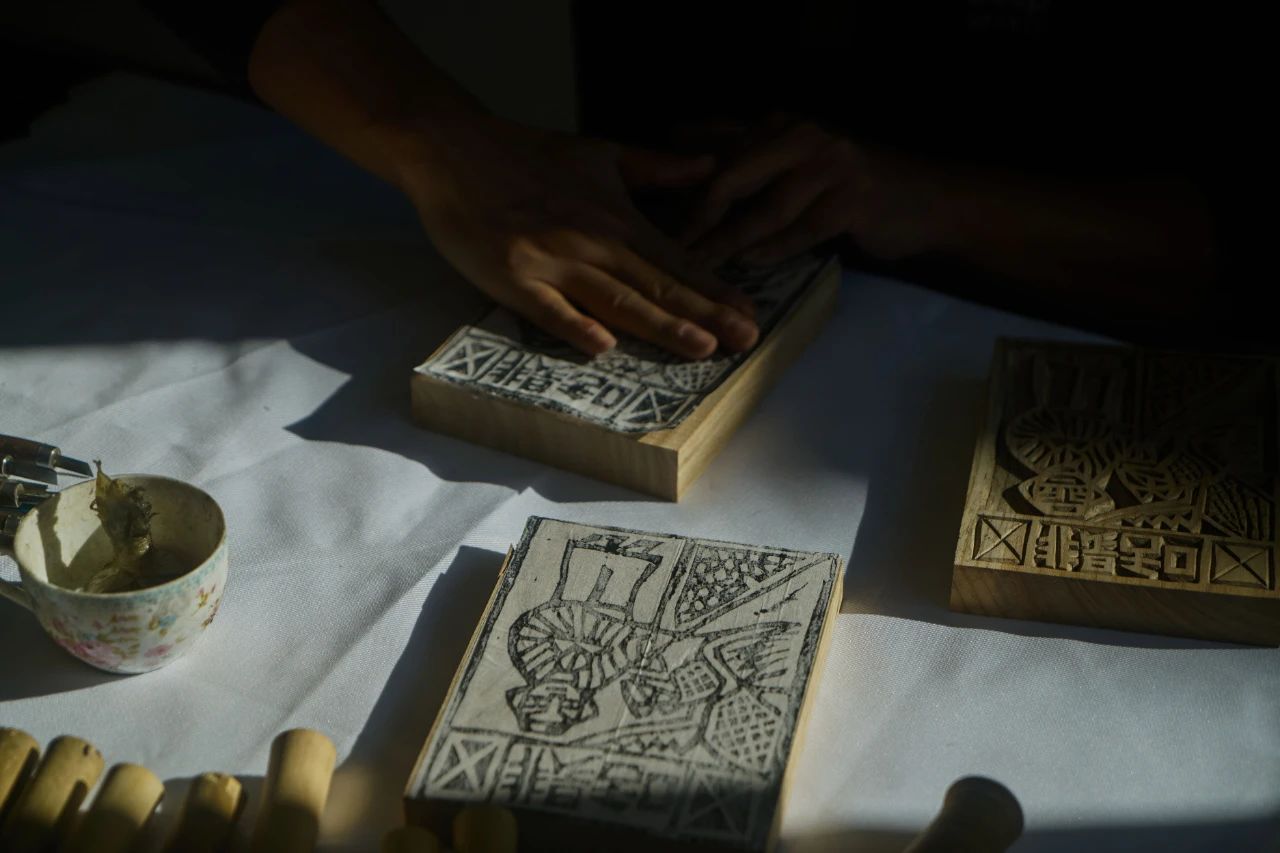
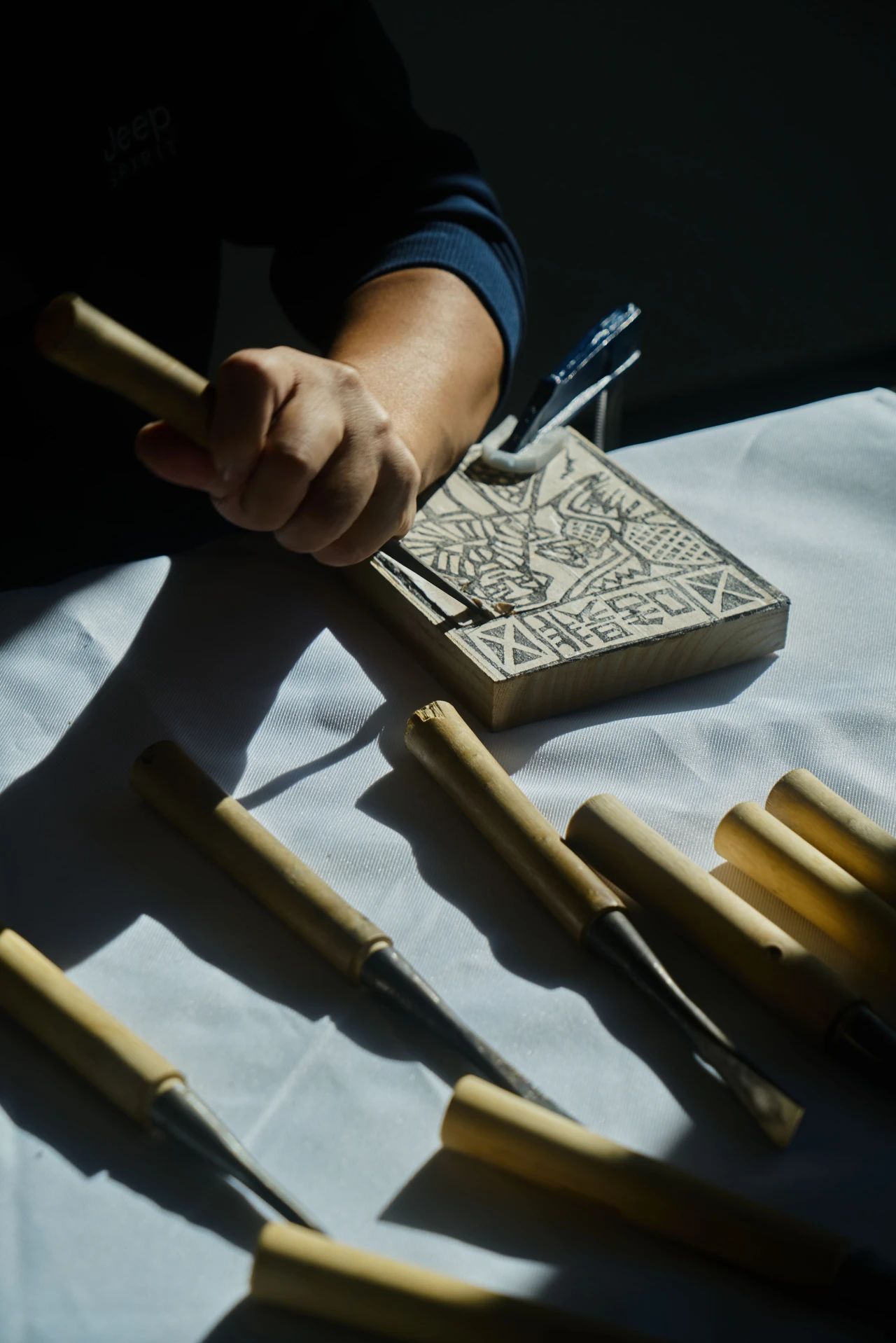
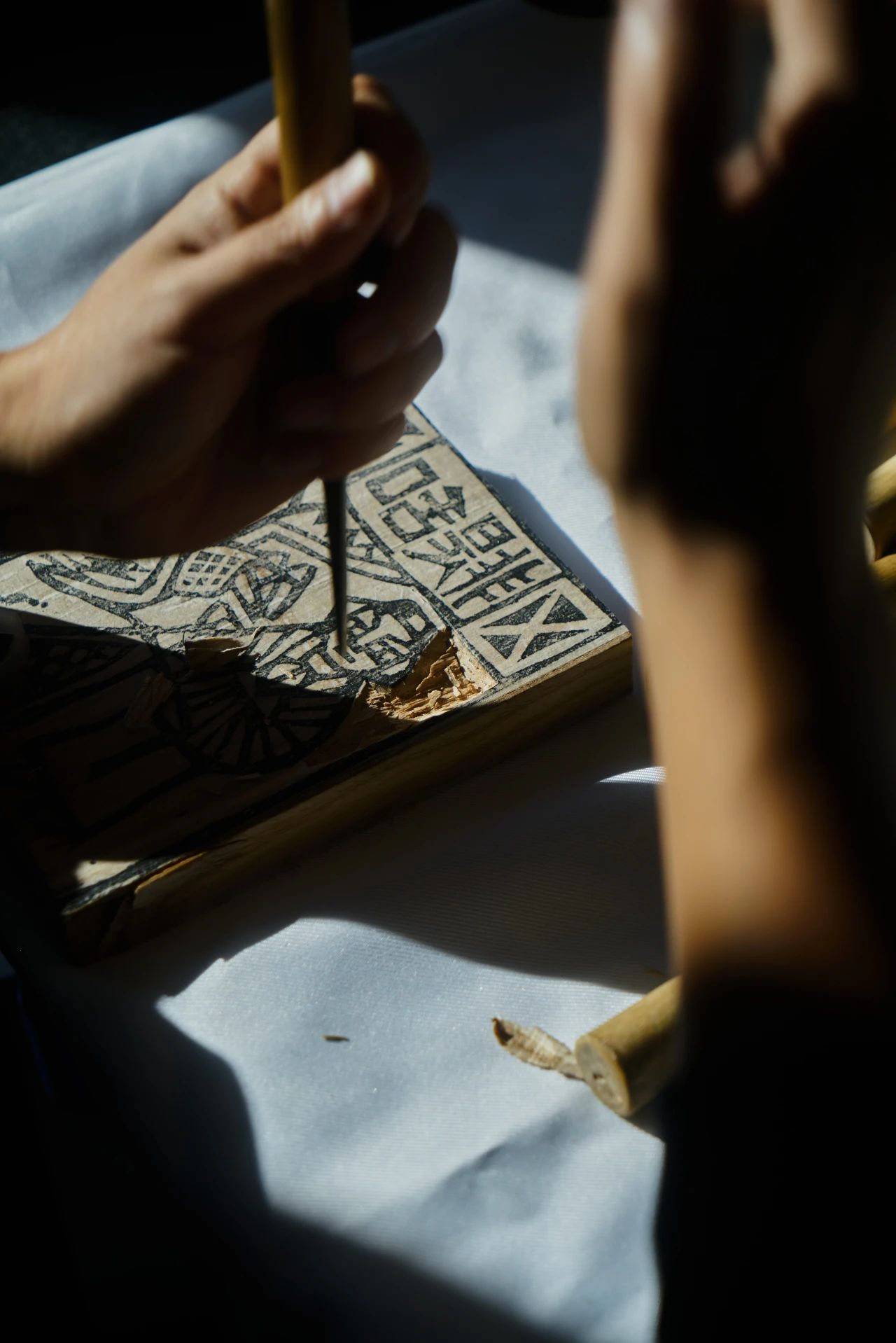
雕刻时,所需的工具非常精细,不同的纹样、肌理、粗细等会有专业的雕刻工具。一块木头经历凿、刻、剔、铲、刮,从而在版面上留下不同的痕迹。
When carving, the tools required are very fine, and there will be professional carving tools for different patterns, textures, thicknesses, etc.A piece of wood undergoes chiseling, carving, picking, shoveling, and scraping to leave different traces on the board.
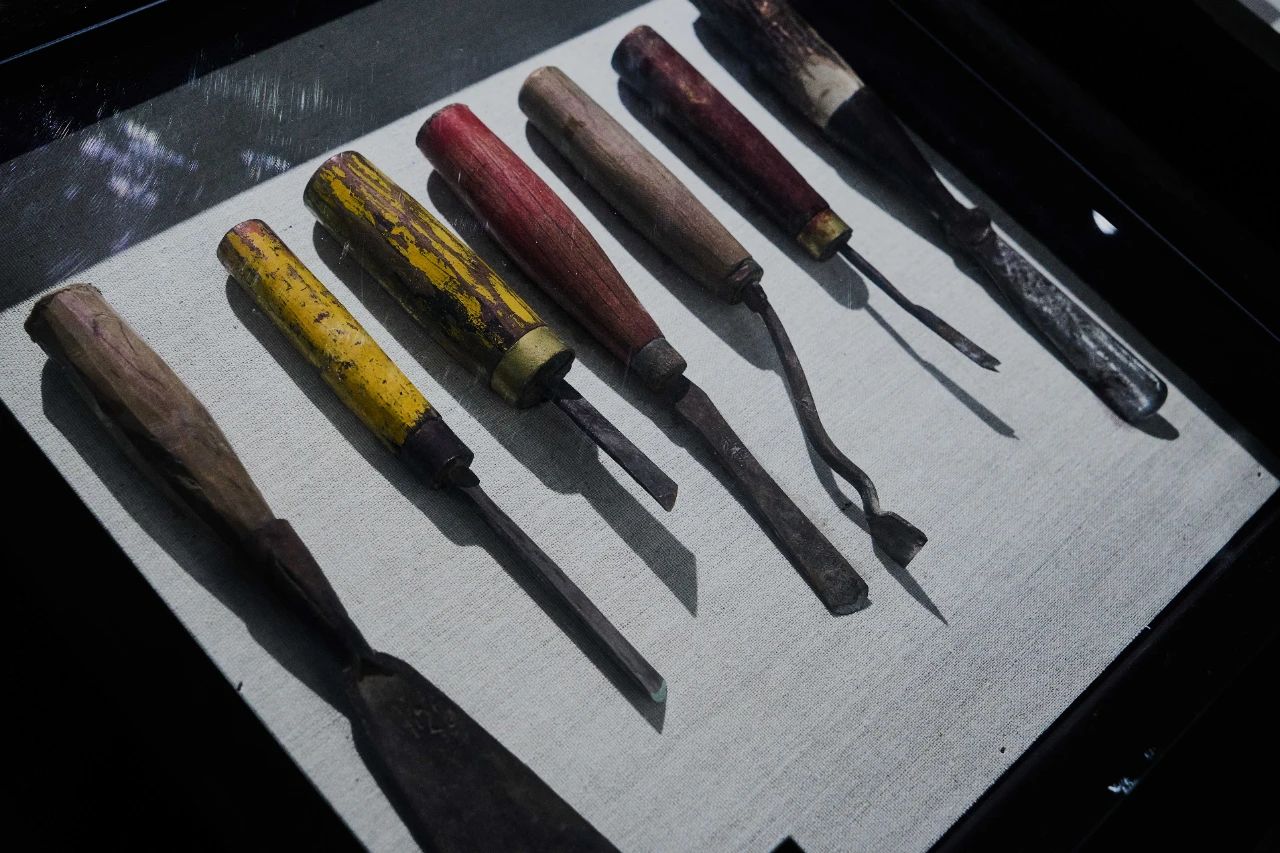
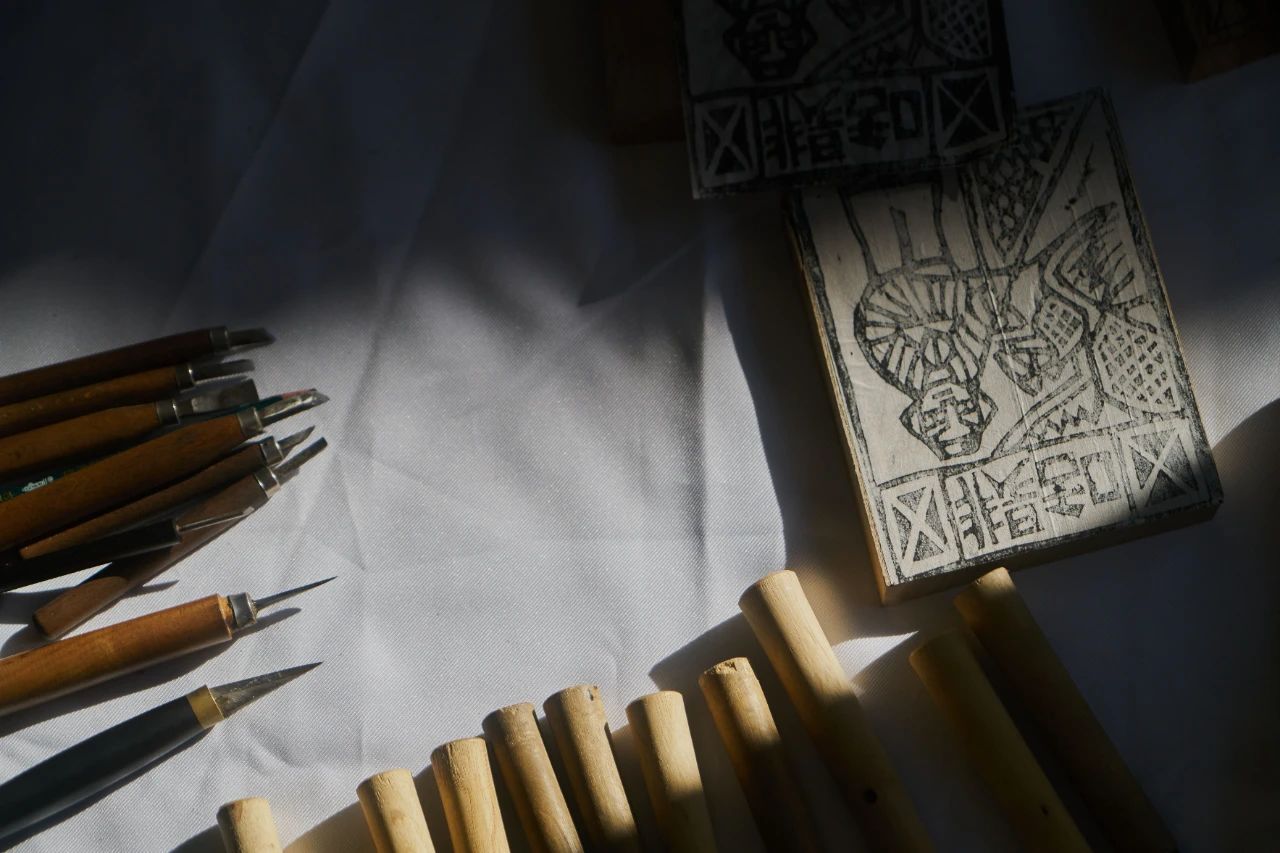
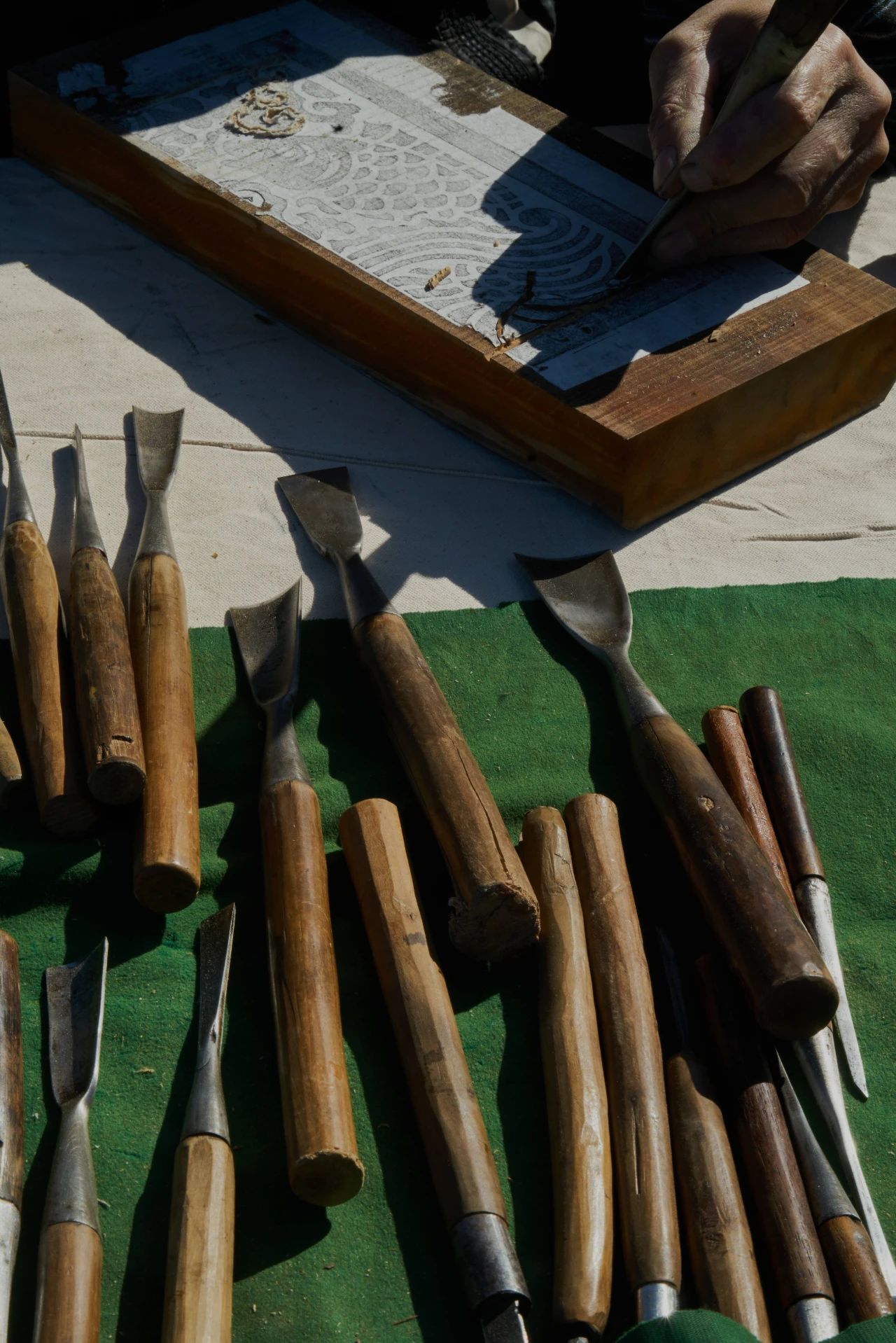
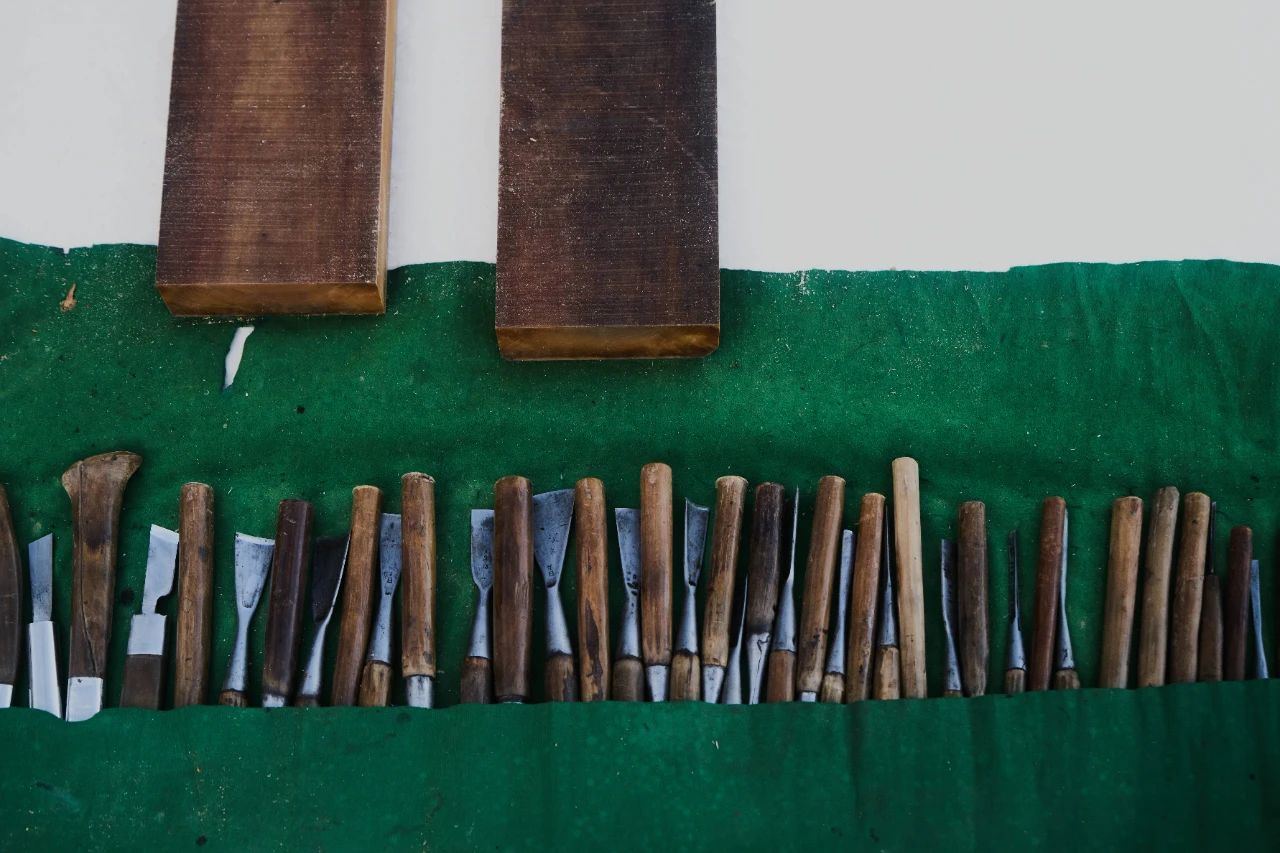
版
雕刻完成后就得到了能用于“印刷”的版了。版的花纹形态多种多样,纳西东巴经版将东巴文化中的自然美学观烙印在经文与图像之中,记载着这片古老地域的迁徙、耕种、劳作与民俗信仰。大理喜洲甲马,是具有神秘色彩的民间木刻版画艺术,一般有飞禽走兽、山川湖海等,多用来祈福消灾,彰显自然万物的朴素之美。作为浙南地区传统的婚嫁必备品,蓝夹缬多以吉祥纹样寄托着美好愿望。木活字会延用于一些族谱的编写,是传承的象征。
After the engraving is completed, a version that can be used for “printing” is obtained.The patterns and forms of the plate are diverse. The Naxi Dongba Sutra Edition imprinted the natural aesthetics of Dongba culture in the scriptures and images, recording the migration, farming, labor and folk beliefs of this ancient region.Dali Xizhou Jiama is a folk woodcut printmaking art with mysterious colors. There are generally birds and beasts, mountains, rivers, lakes and seas. It is mostly used to pray for blessings and eliminate disasters, highlighting the simple beauty of all things in nature.As a traditional wedding must-have in southern Zhejiang, blue Jiaxie mostly sustains good wishes with auspicious patterns.Wooden movable type will be extended to the compilation of some genealogies and is a symbol of inheritance.
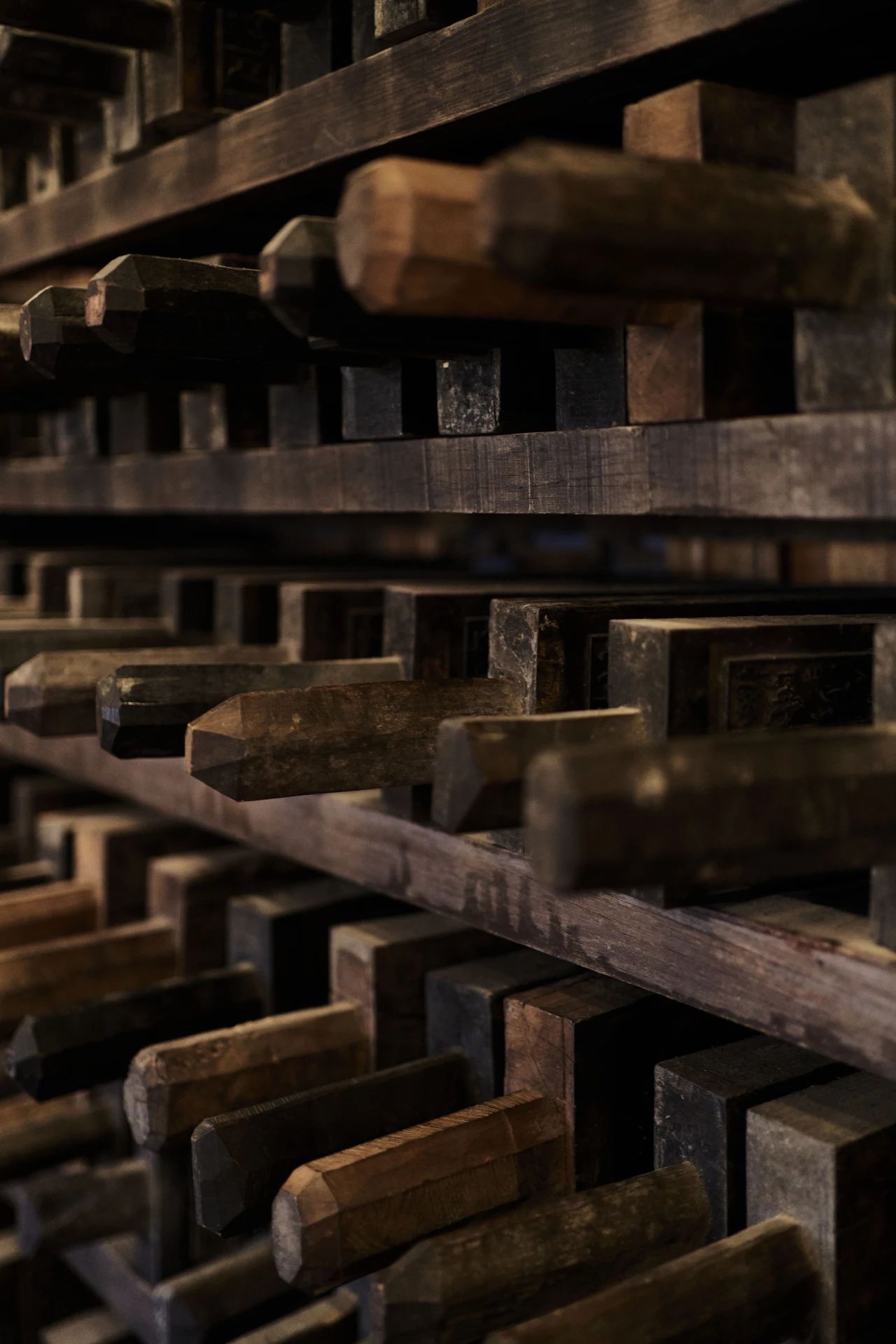
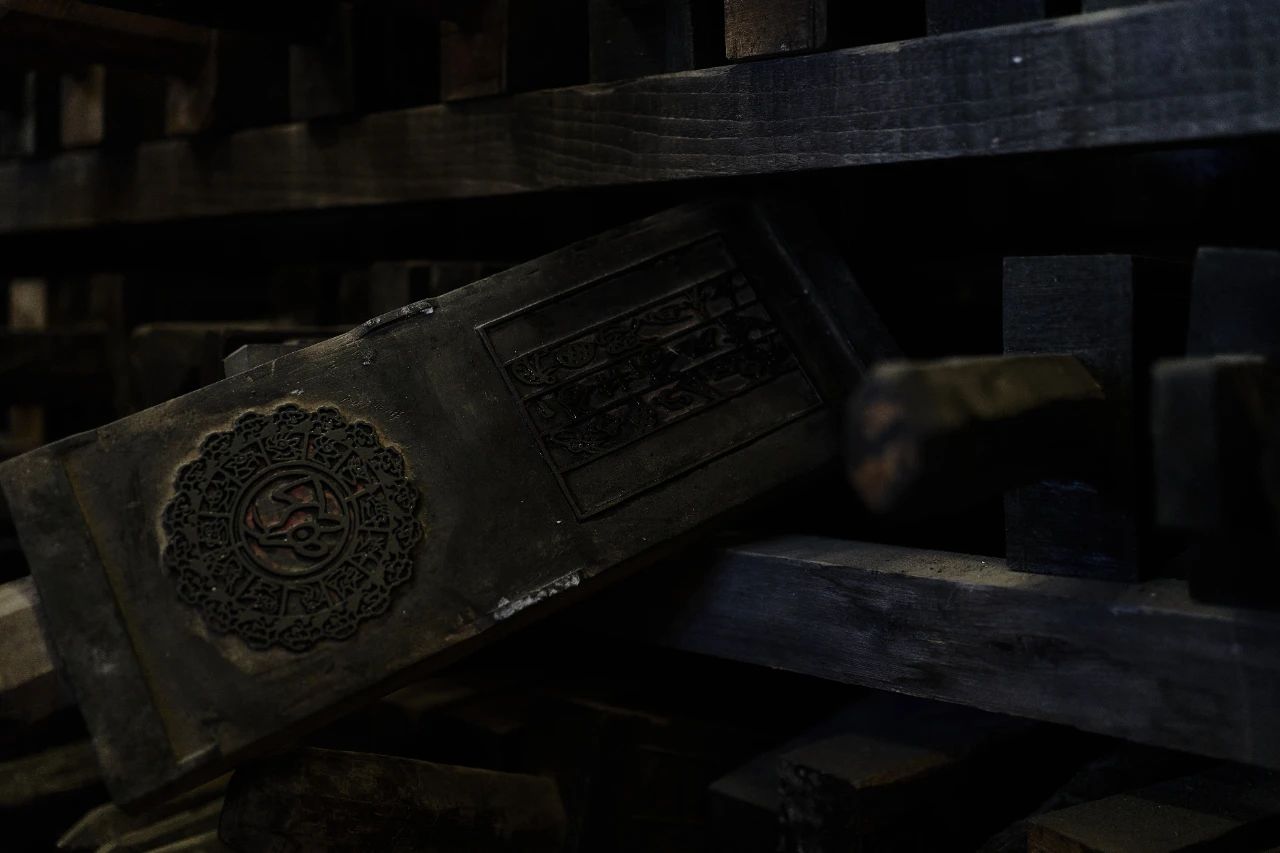
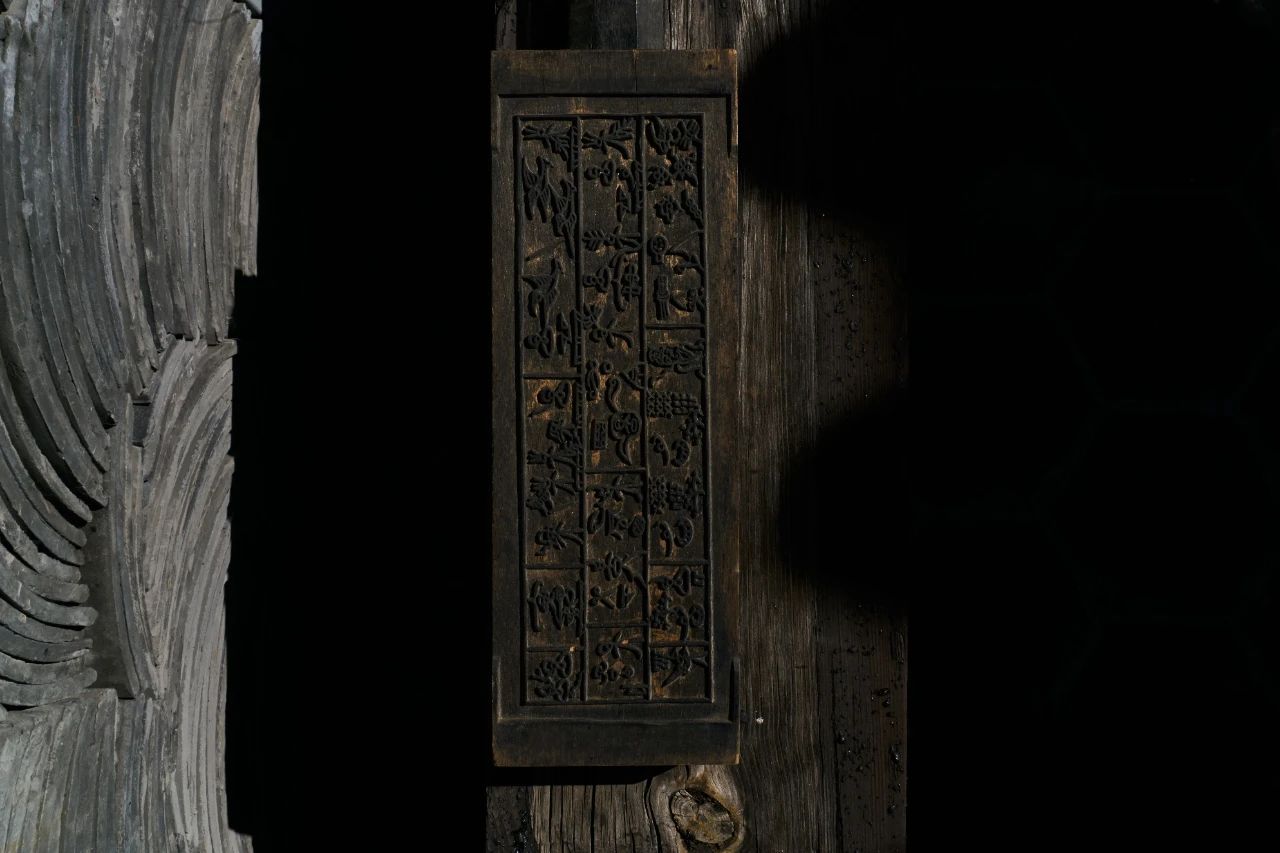
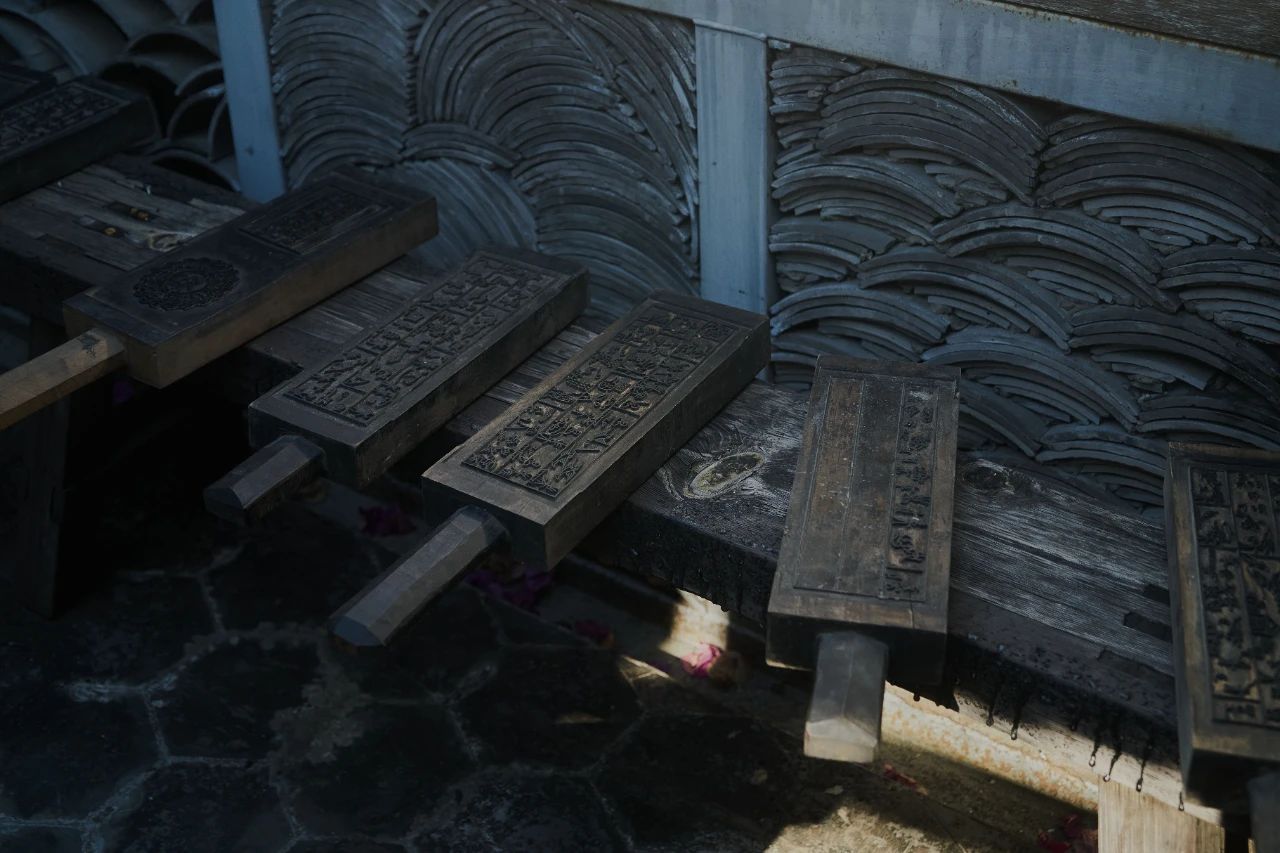
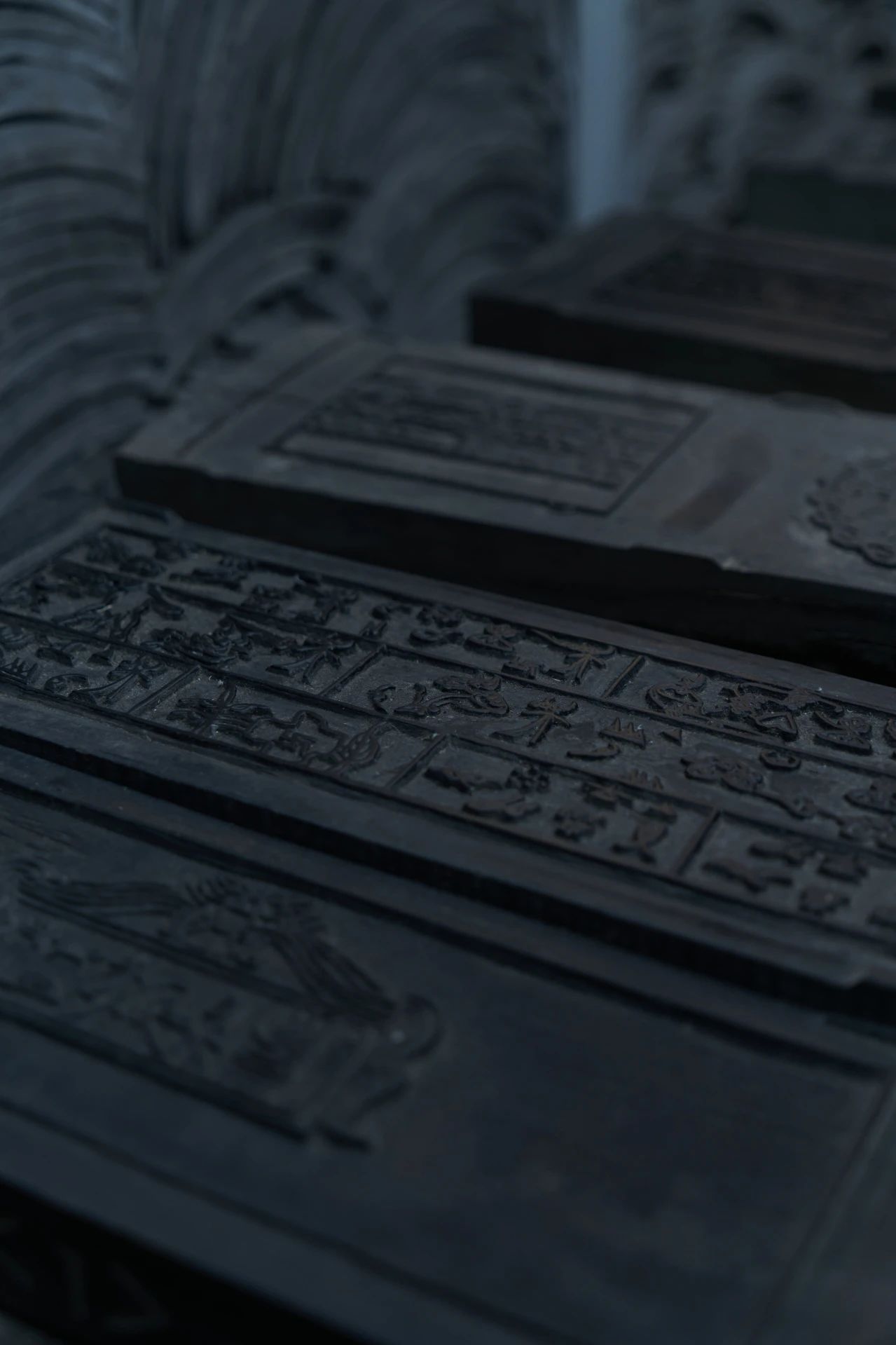

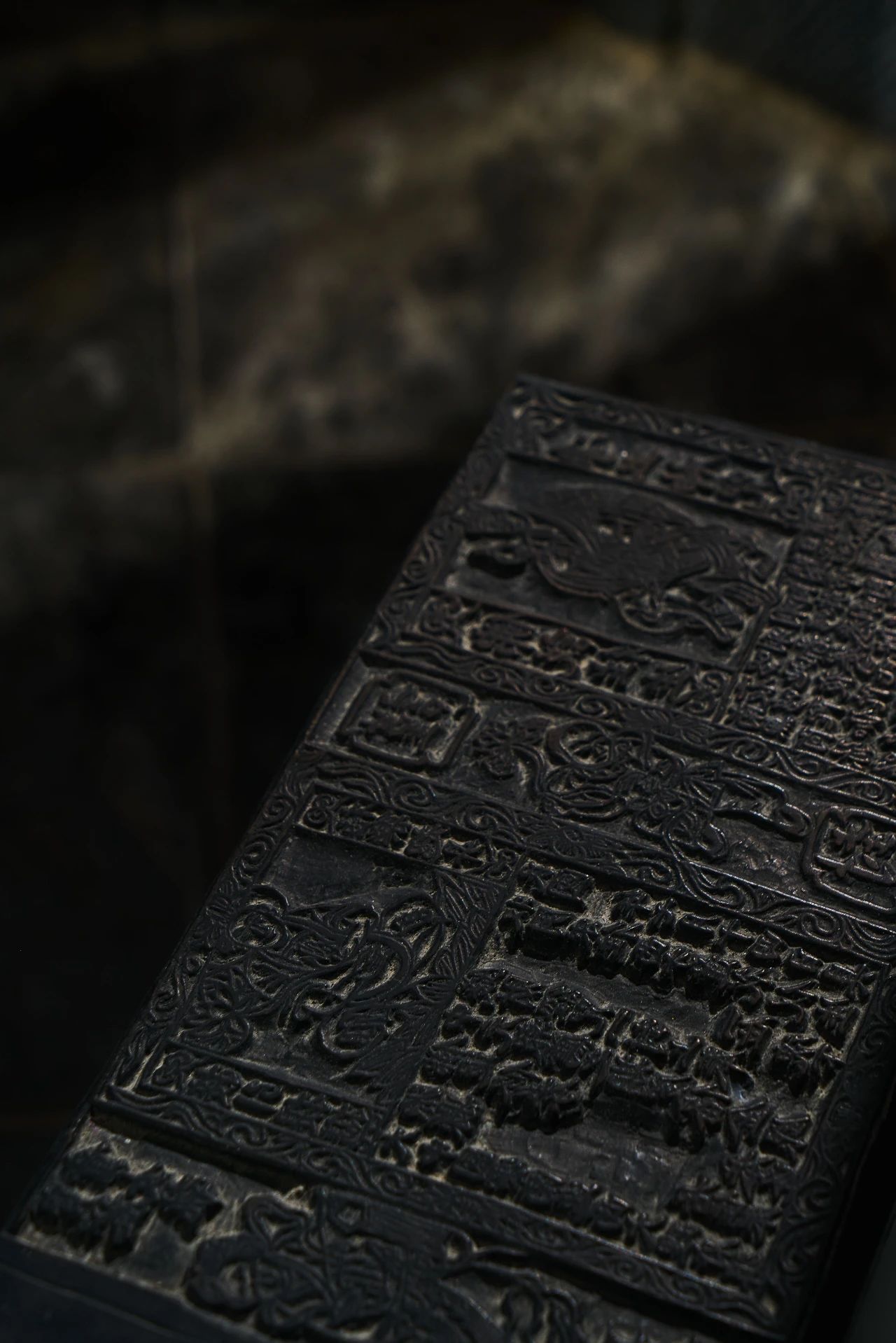
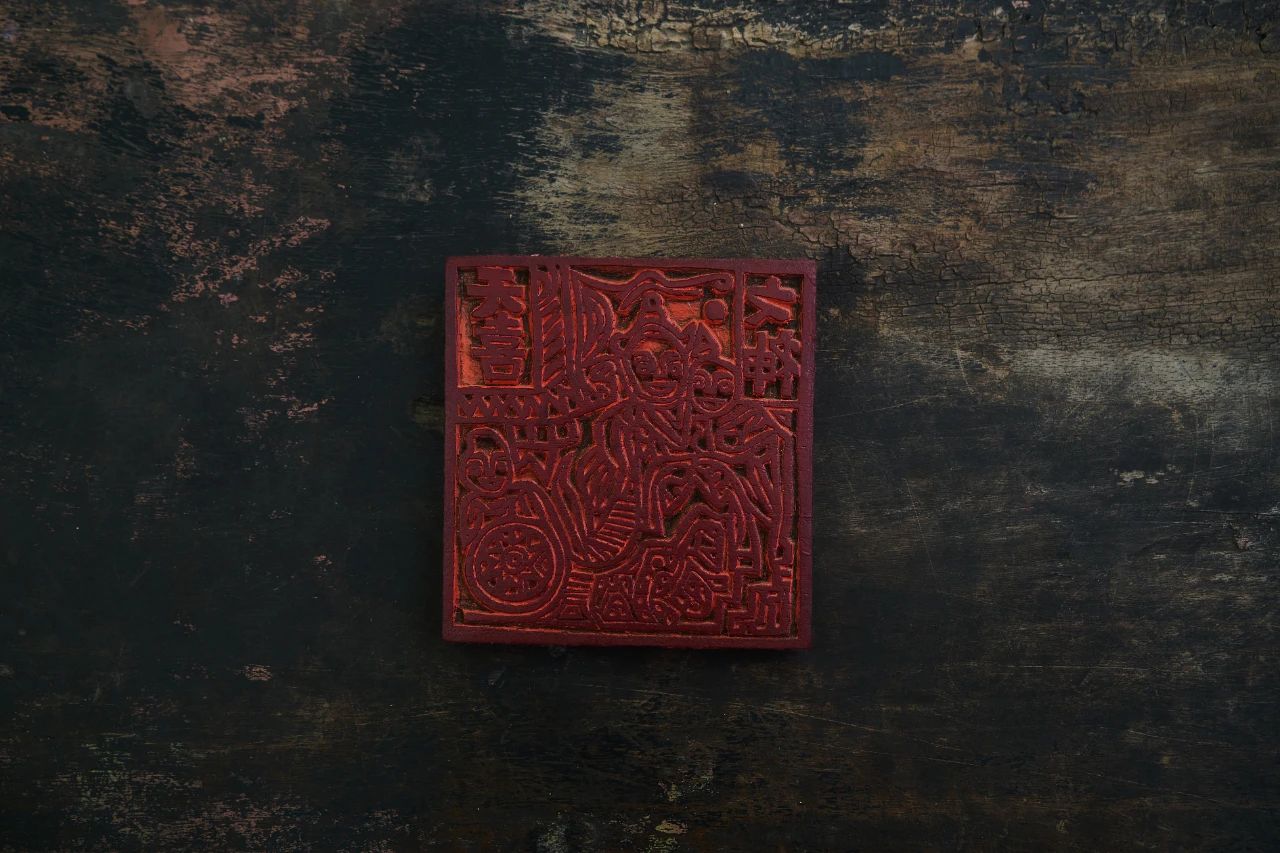
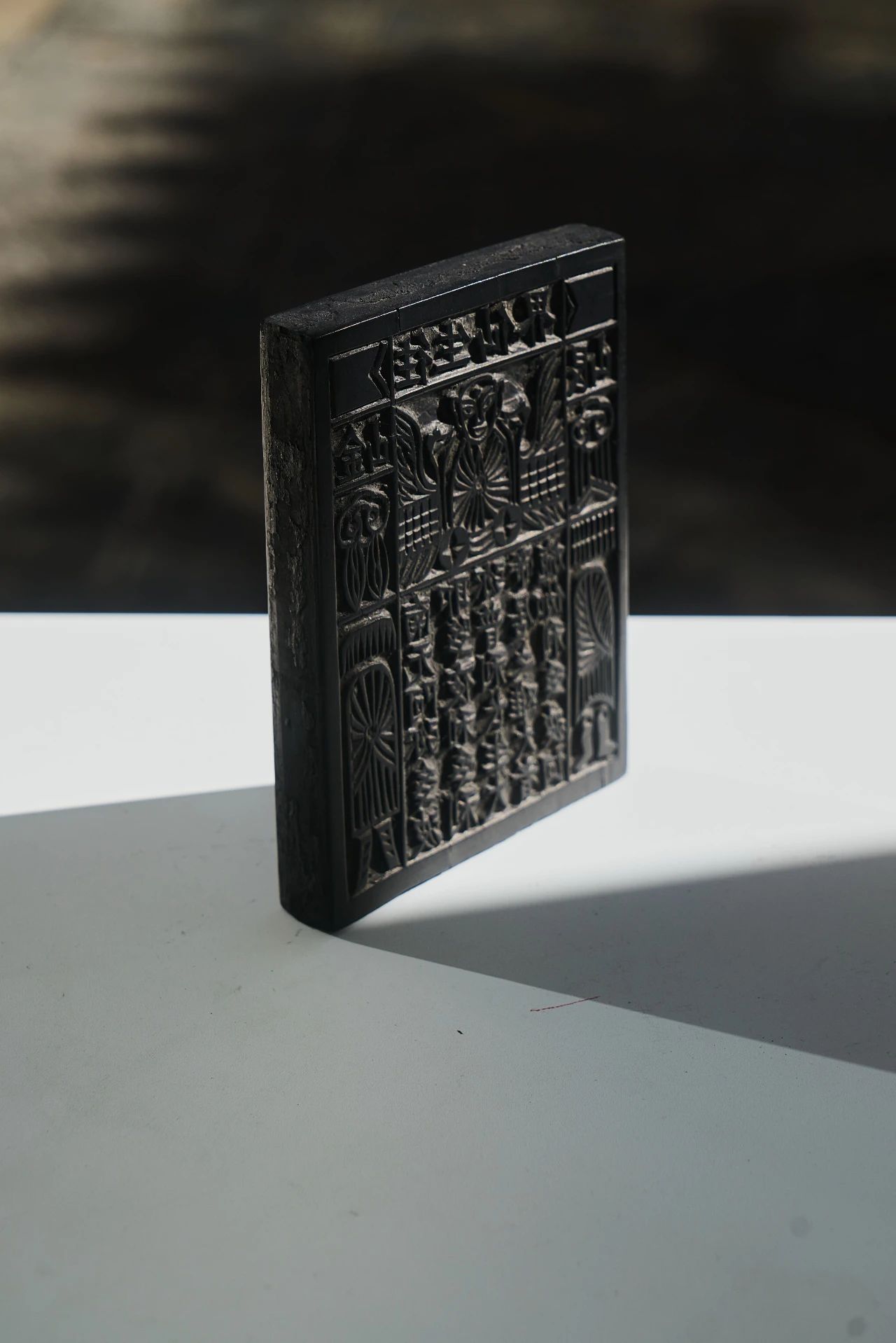
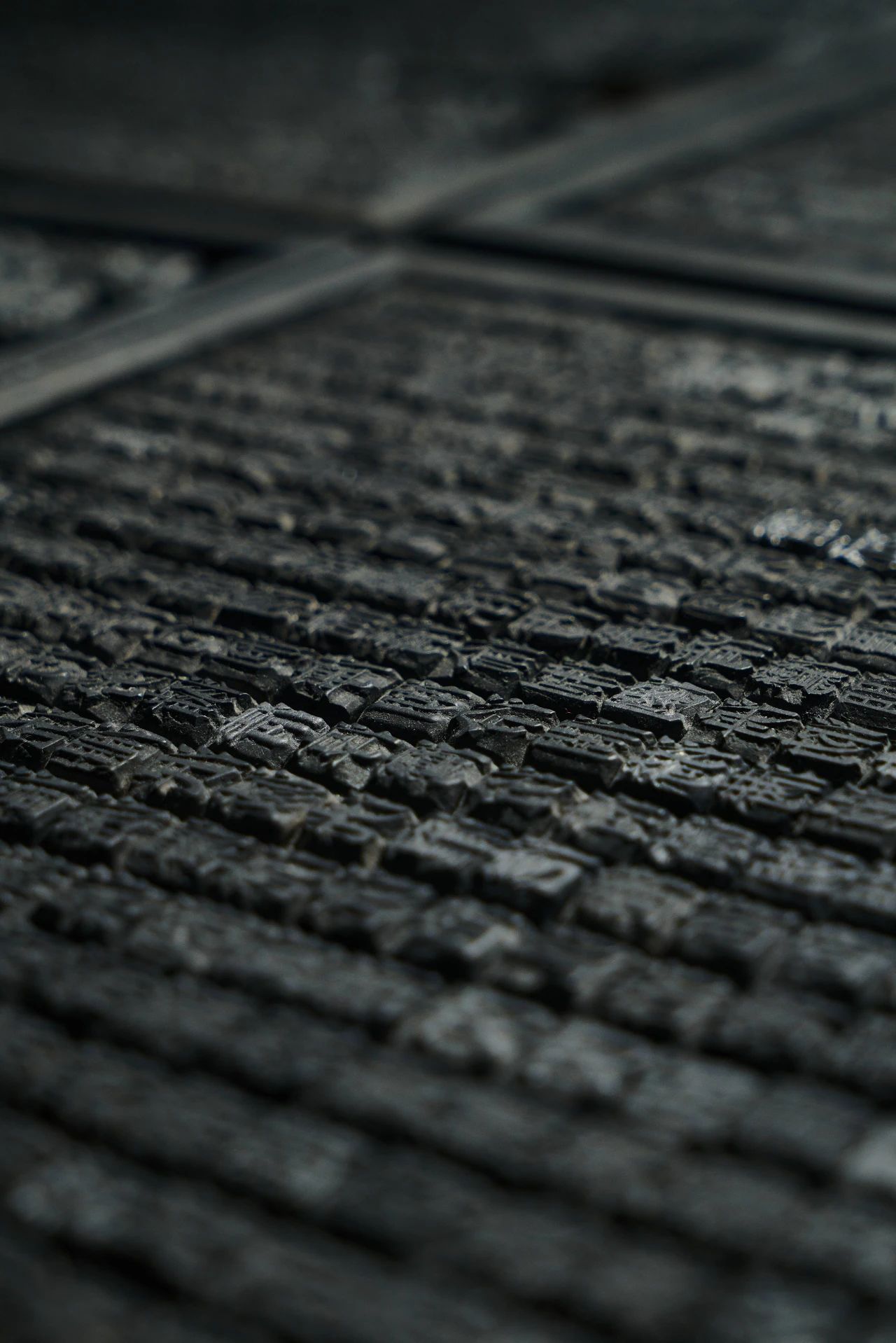
印
印是实现从工艺性到功能性的转变。转印工艺包括刷印、拱花、铃印、拓印、注染、漏印、型染、夹染等多种类型。大部分遵循镜像原理,即所得到的图案与版上雕刻的内容是相反的。
Printing is to realize the transition from craftsmanship to functionality.The transfer process includes brush printing, Gonghua, seal printing, rubbing, injection dyeing, missed printing, type dyeing, clip dyeing and other types. Most of them follow the principle of mirroring, that is, the resulting pattern is the opposite of the content engraved on the plate.
与印章理念相似,在木板上刻出反体文字或图案,上墨、覆纸、加压,从而取得正体字和图案。温州瑞安木活字、苏州桃花坞木版年画正是如此。
Similar to the concept of seals, reverse text or patterns are carved on wooden boards, inked, cover with paper, and pressurized to obtain positive characters and patterns.This is the case with Wenzhou Ruian wooden movable type and Suzhou Taohuawu woodcut New Year paintings.
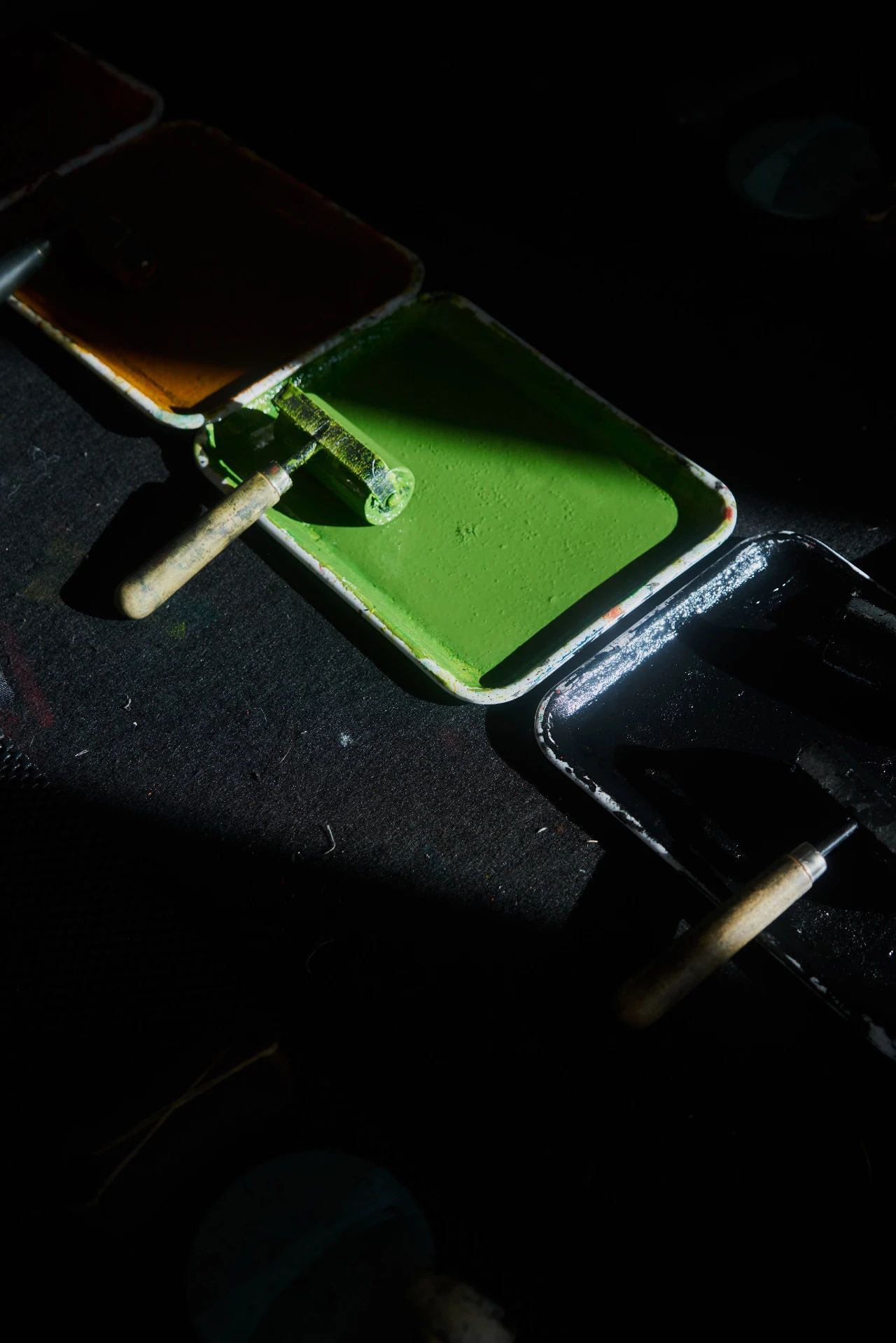
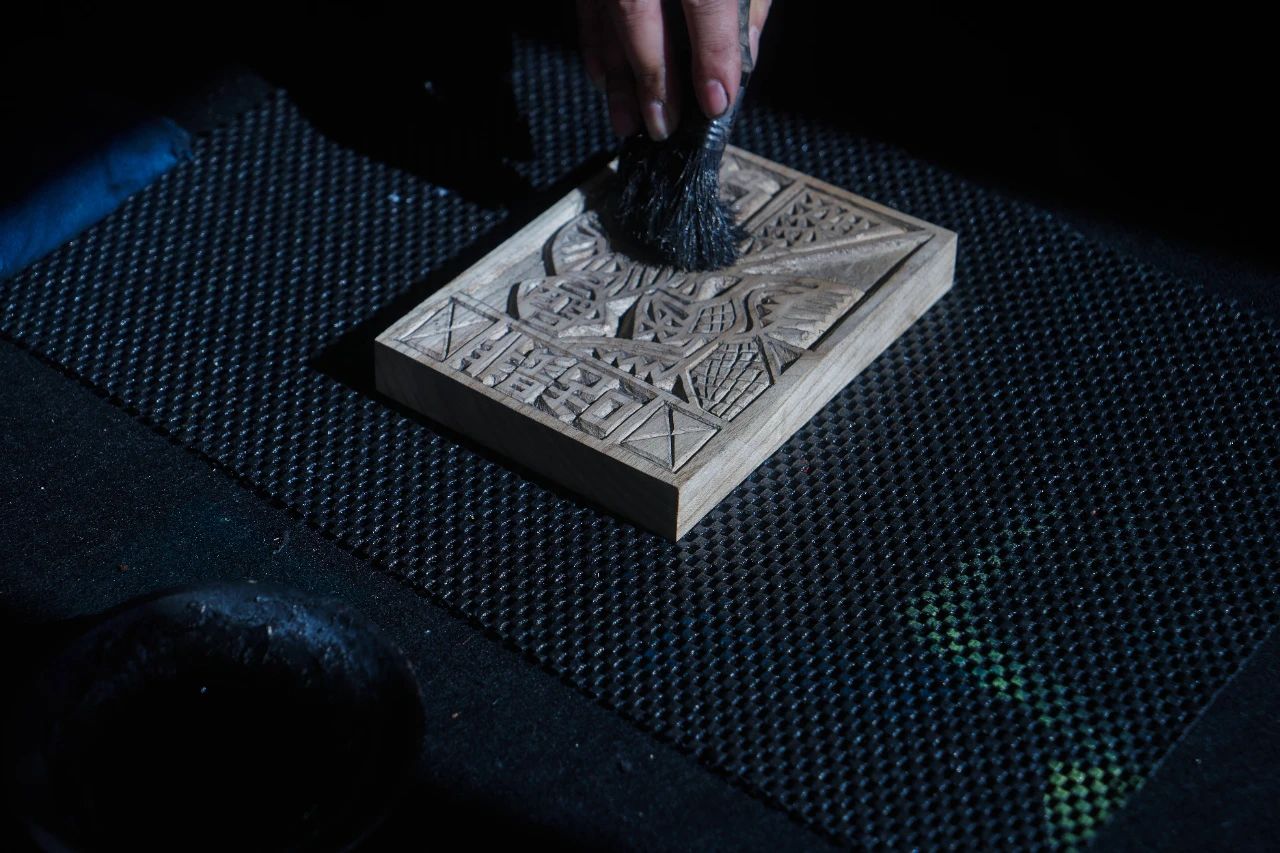
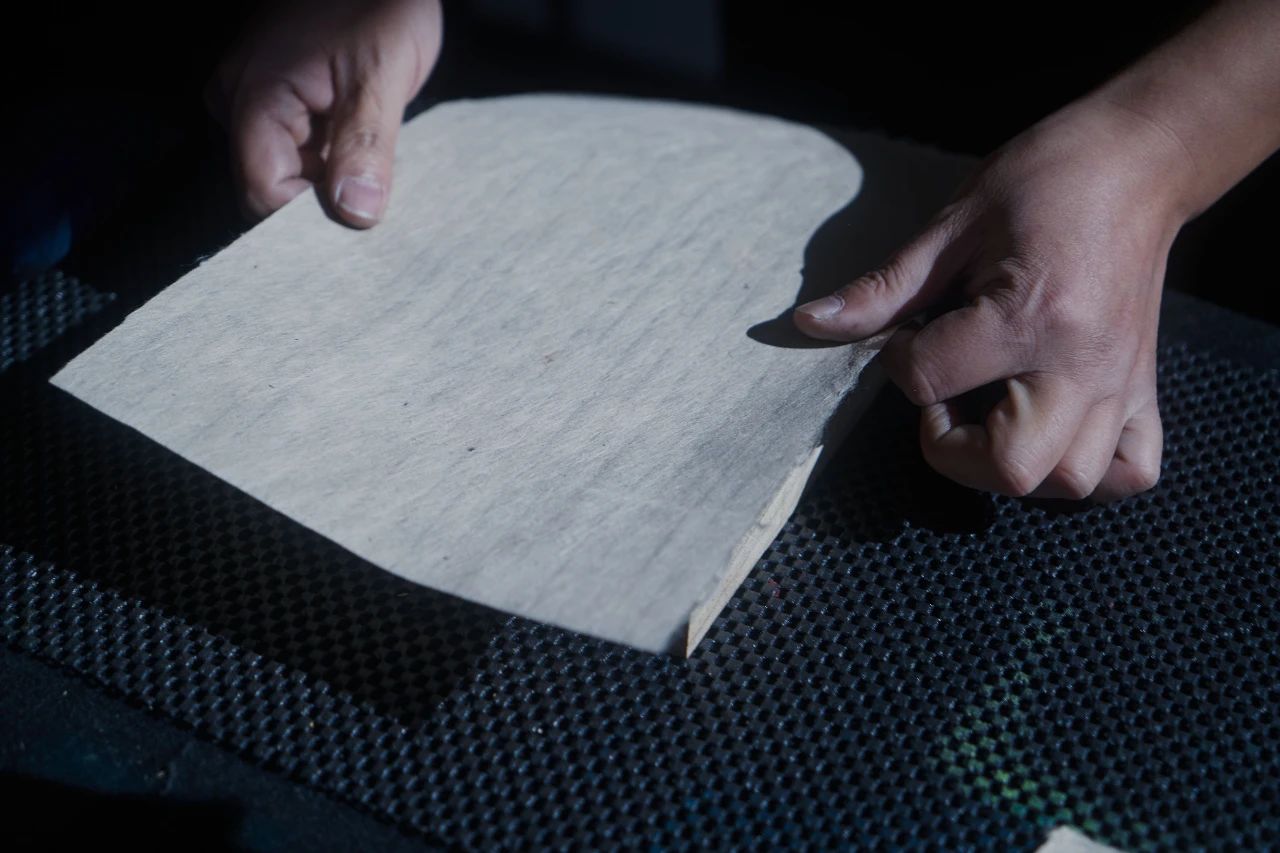
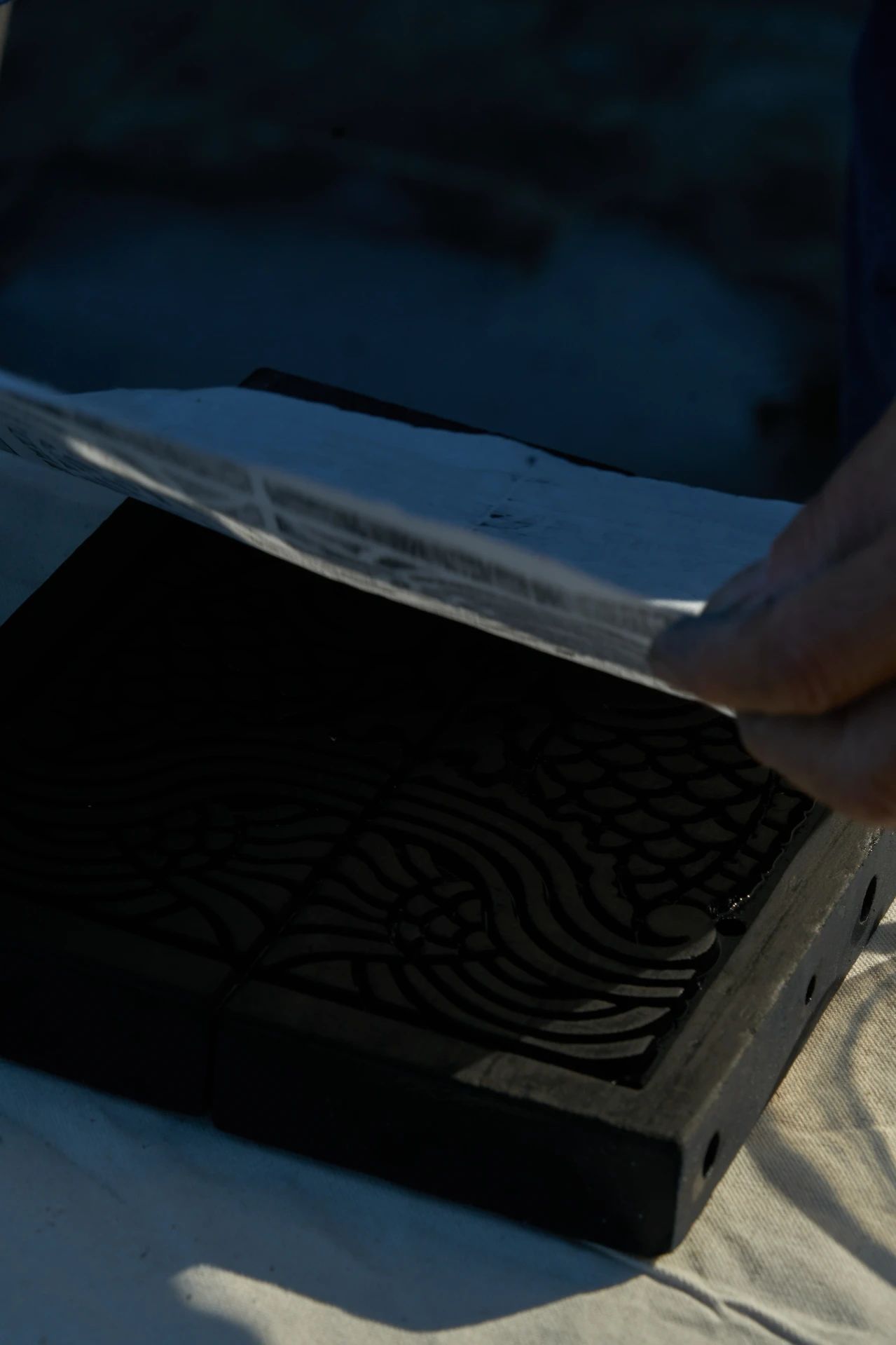
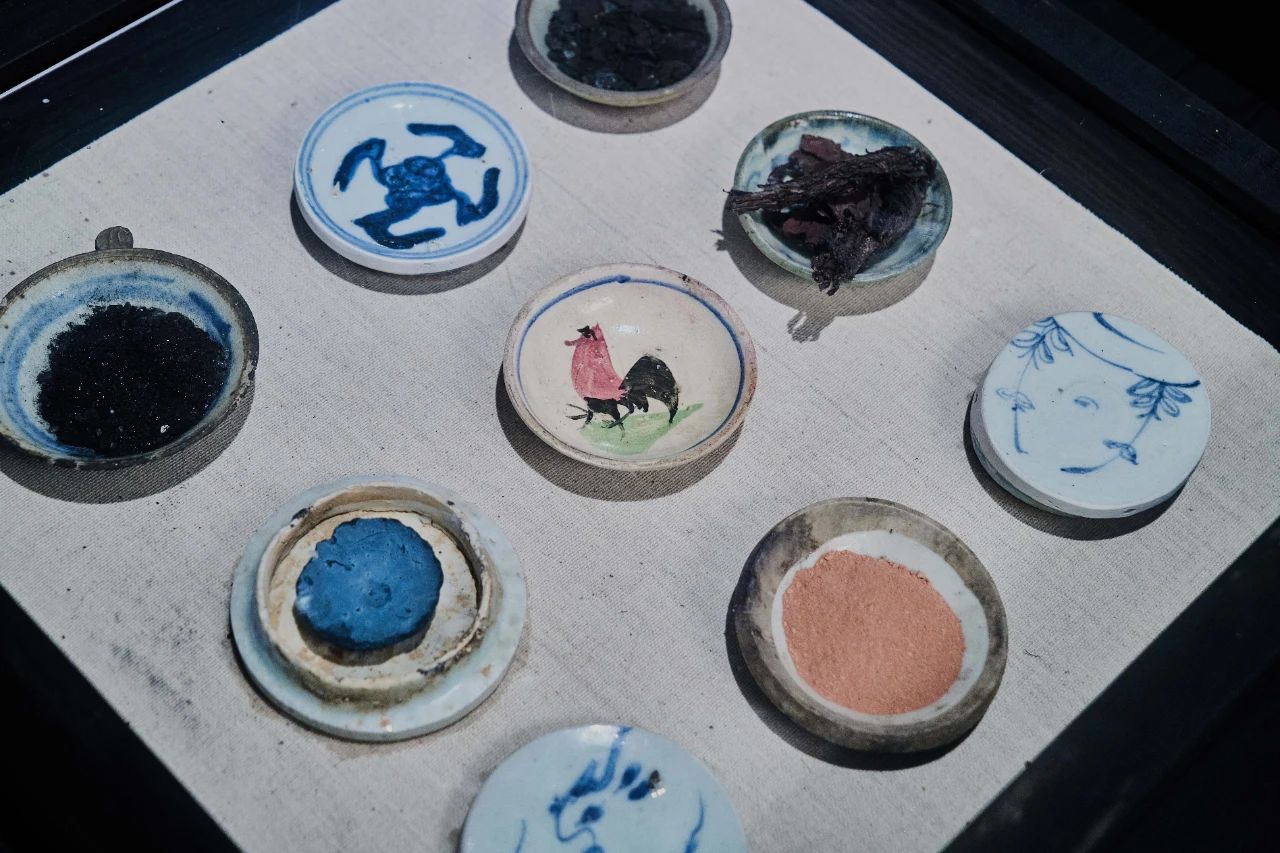
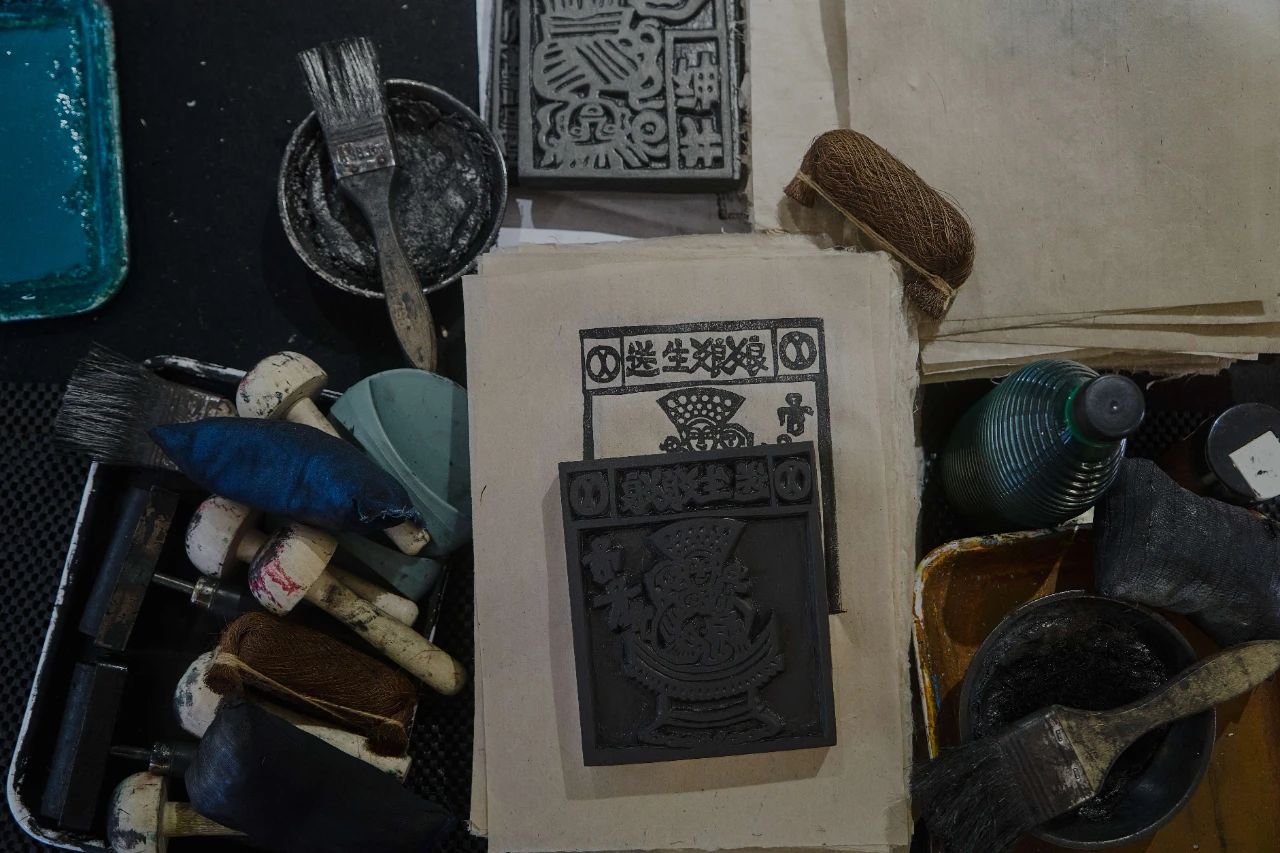
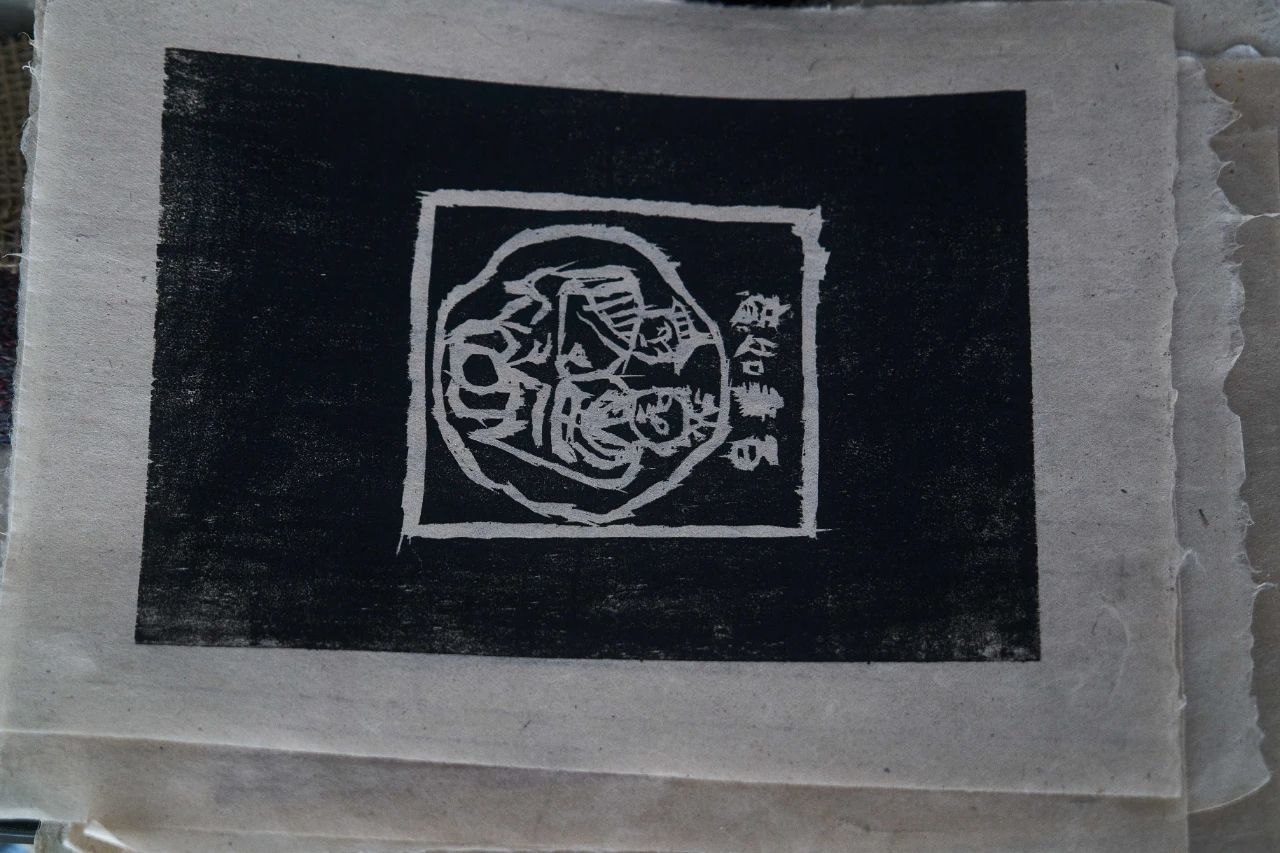
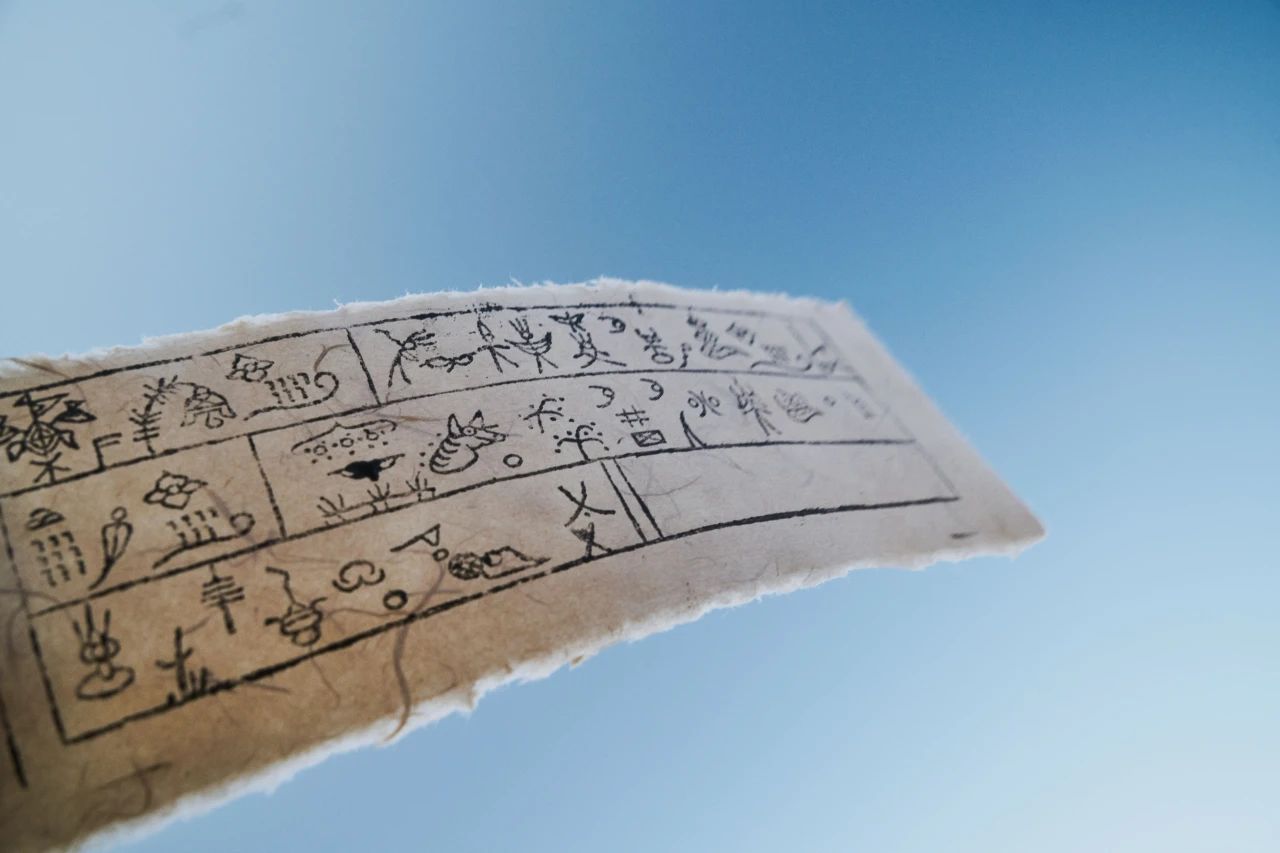

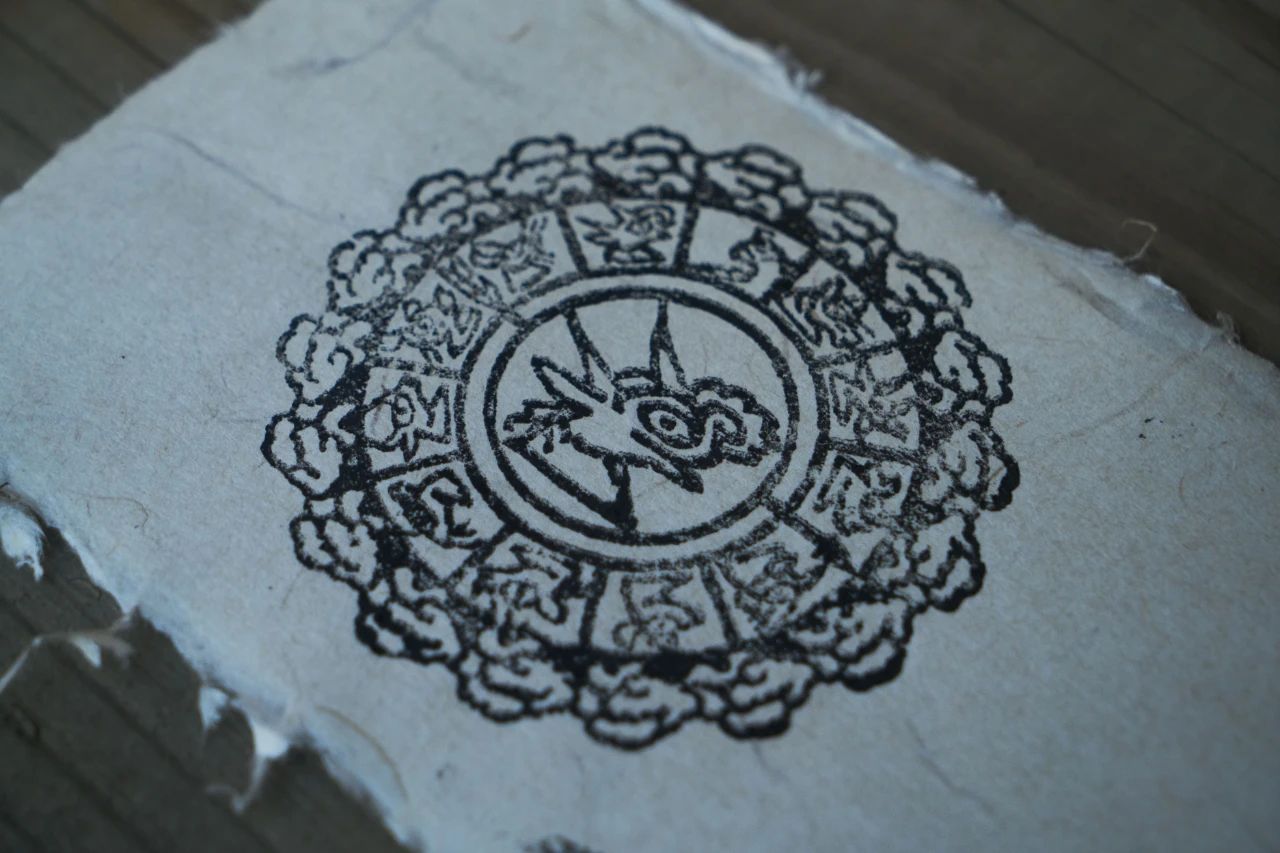
“拱花”是中国传统水印木刻一大绝技,将宣纸覆于拱花版,垫上毛毡,再用拱花锤将版面图形砑于纸上,从而得到类似浮雕的肌理。
"Gonghua" is a unique skill of Chinese traditional watermark woodcut. The rice paper is covered on the Gonghua plate, padded with felt, and then the Gonghua hammer is used to add the layout graphics on the paper, so as to obtain a texture similar to relief.
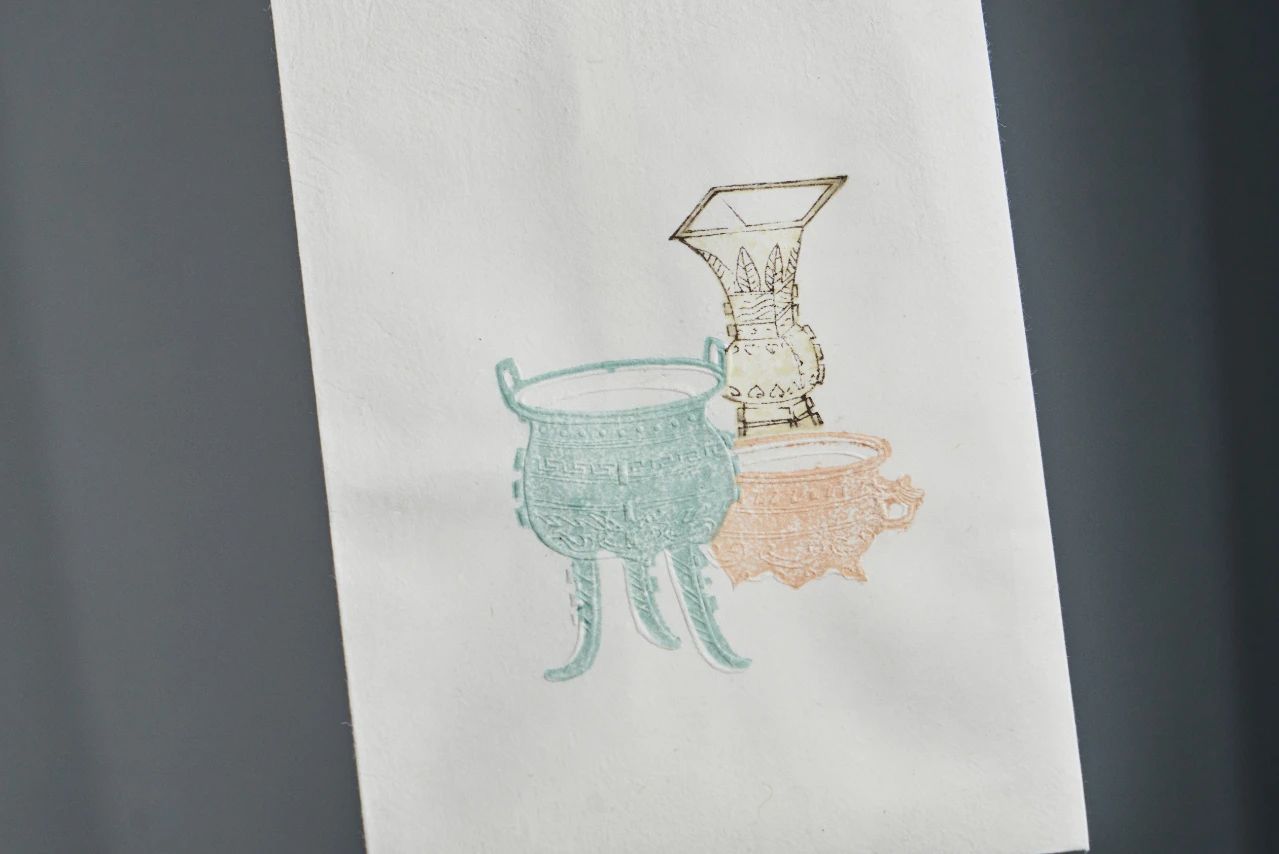
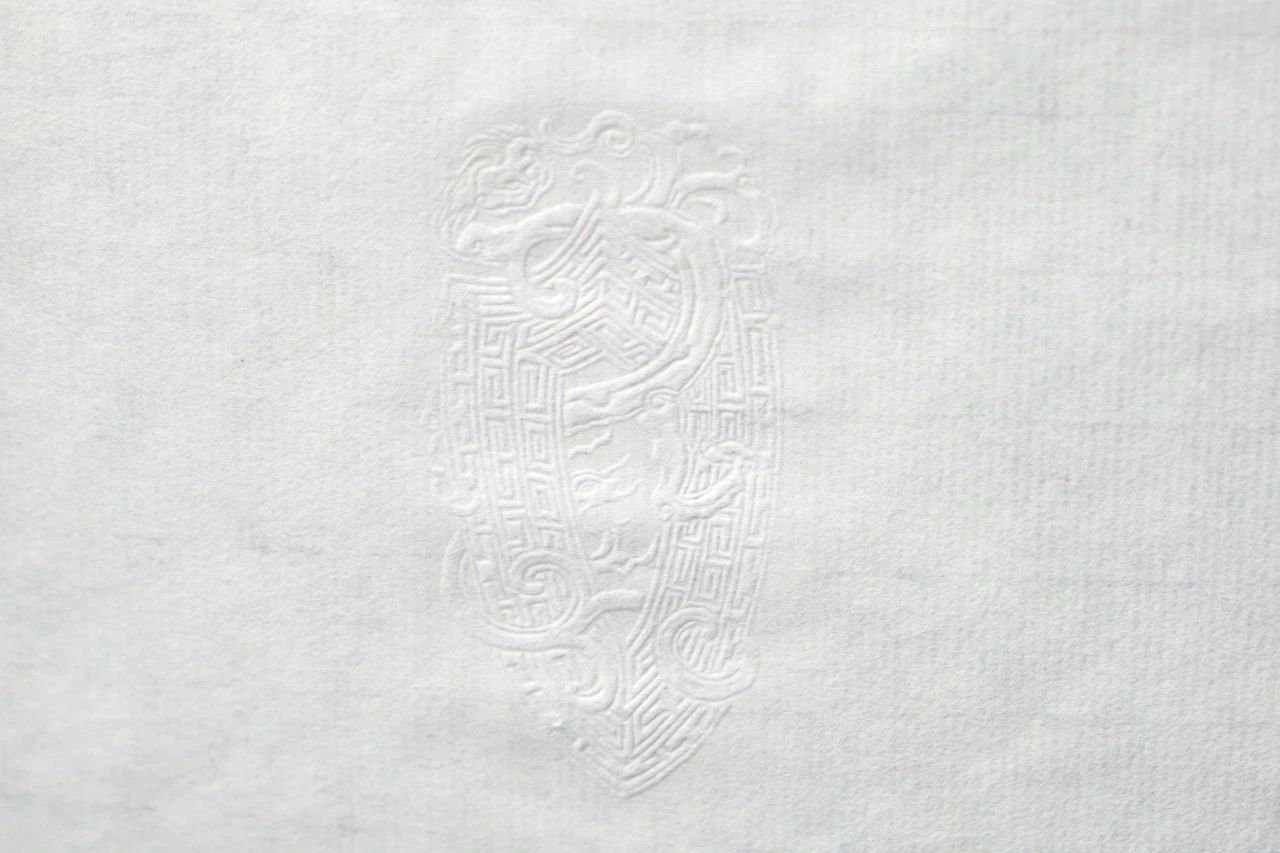
蓝夹缬则是夹染的方式使染液达到每一个间隙进行染色转印的。
The blue Jiaxie is used to make the dye solution reach every gap for dyeing and transfer.
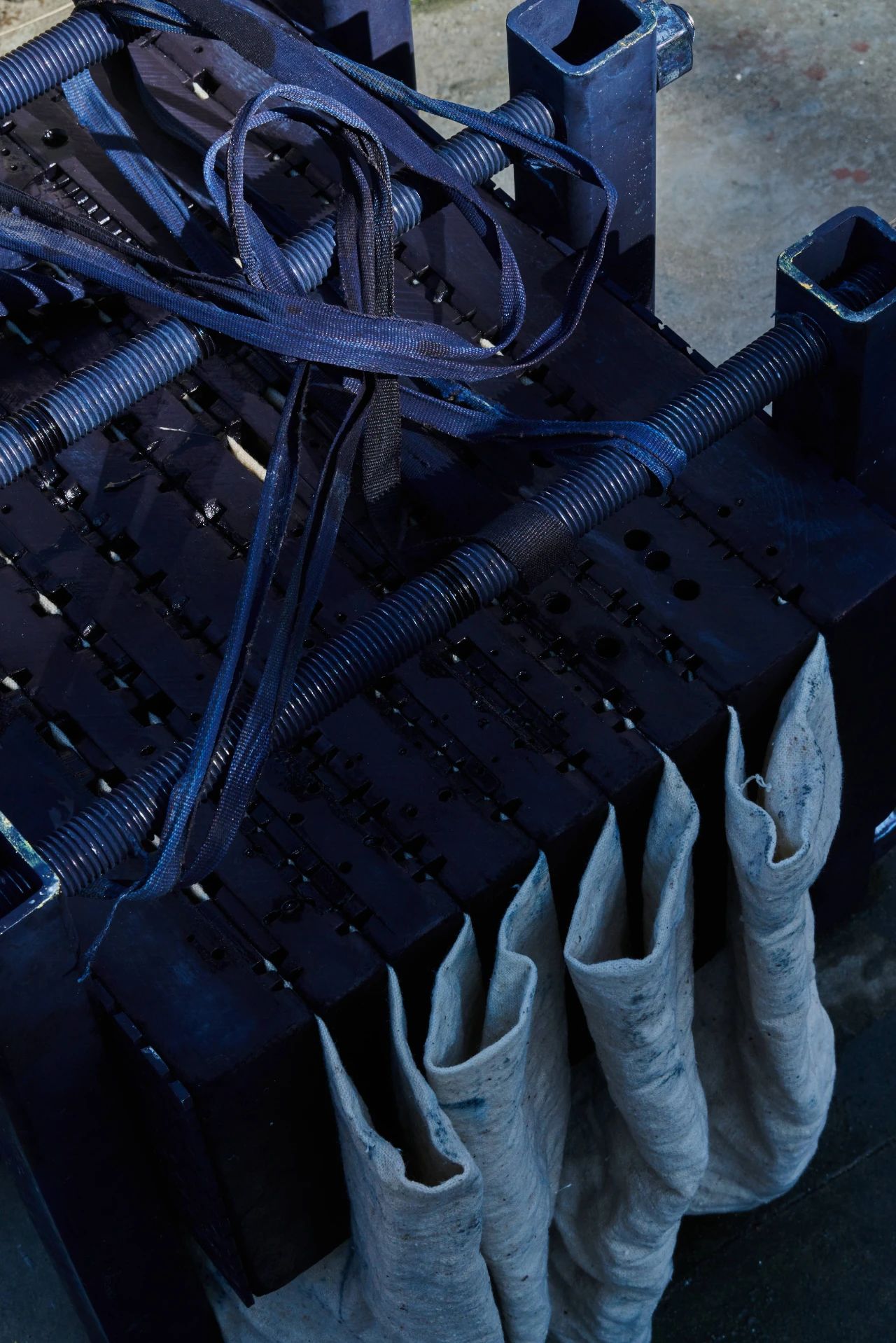
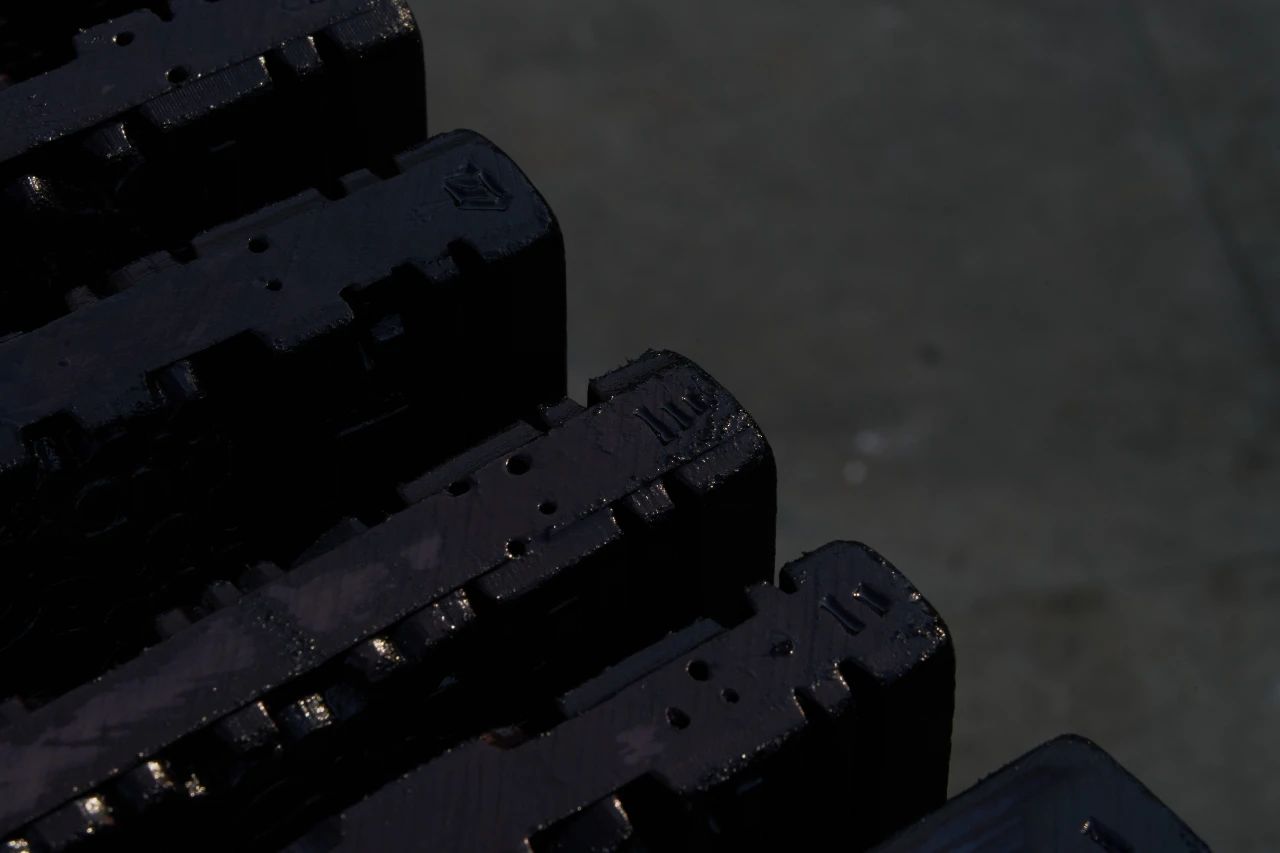
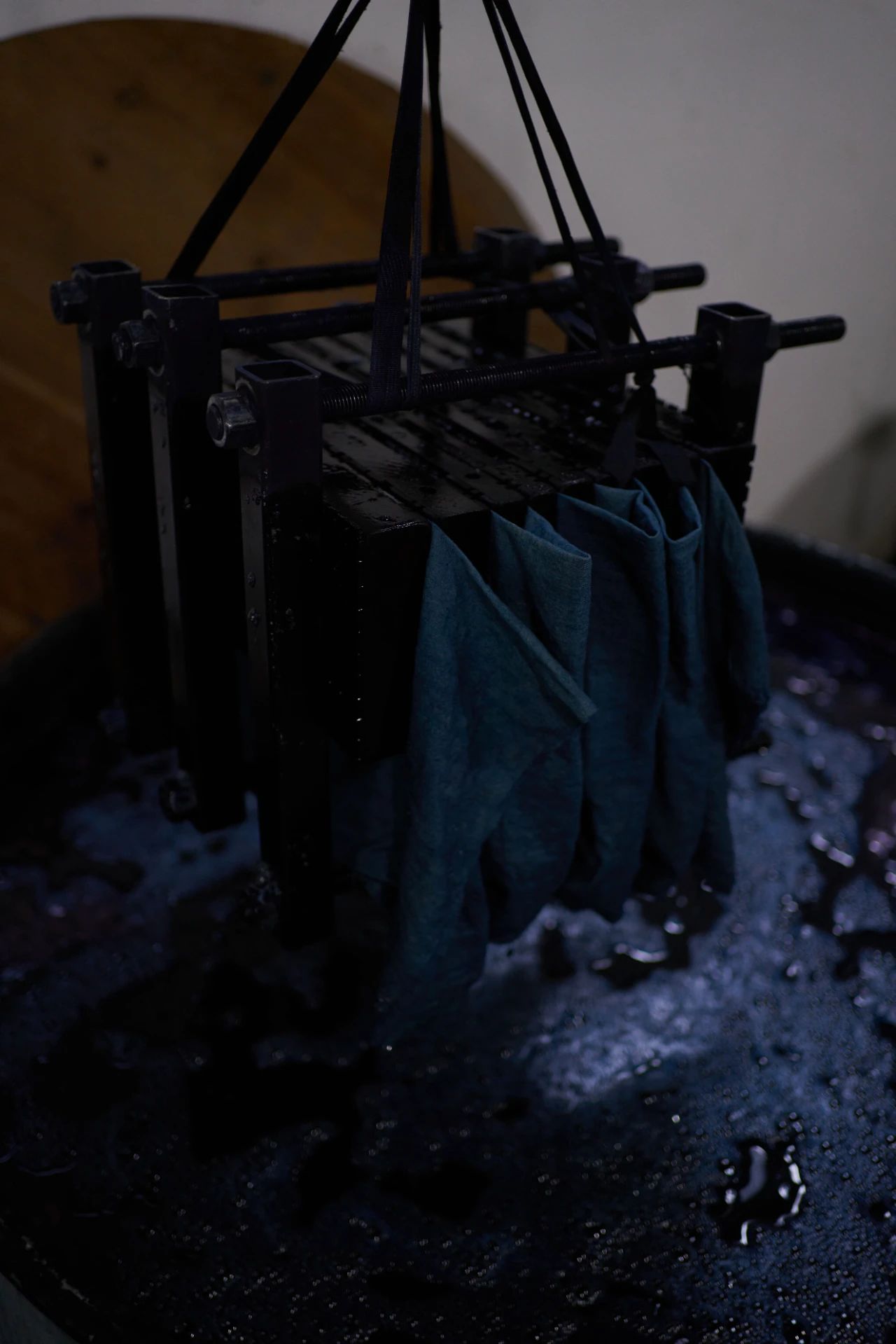
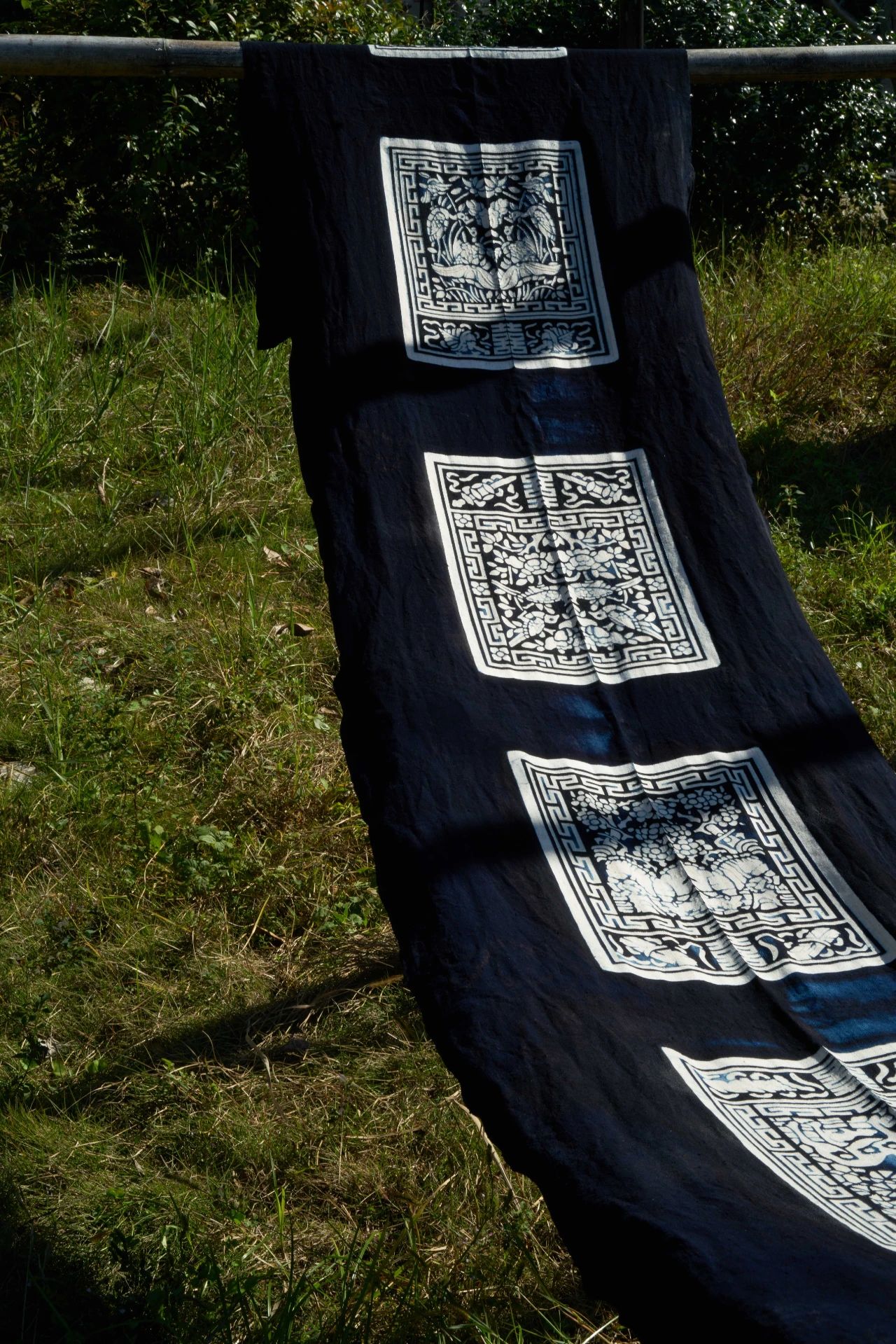
雕版技艺,刻下古韵悠长,将诗书画印融于纸绢之上,其艺术魅力与文化底蕴得以代代流传。
The carving technique has carved a long ancient rhyme and blended poetry, calligraphy and painting on paper and silk, and its artistic charm and cultural heritage have been passed down from generation to generation.

2023 Research Achievements in Wooden Materials Engraving
融设计图书馆和感物团队基于对木版年画、木版水印、木活字、甲马、金石篆刻、雕版拓印、模戳印花、夹缬、蓝印花布等中国传统手工艺的研究与考察,从「板- 雕 - 版 - 印」四个维度解构「雕版」的材料与工艺,得到「融研究图 · 木与雕版」手册。
Based on the research and investigation of traditional Chinese handicrafts such as woodcut New Year paintings, woodcut watermarks, wooden movable type, Jiama, Jinshi seal carving, engraving, die stamp printing, Jiaxie, and blue printed cloth, the Rong Design Library and the Ugan concept team deconstructed the materials and techniques of "engraving" from the four dimensions of "board-carving-plate-printing", and obtained the manual "Rong Research Map· Wood and Engraving".

「融研究图 · 木与雕版」手册还原了从板材处理、上样、雕刻的工序,「板」成为「版」,再通过不同转印工艺在承印物上进行印染直至获得印物的过程,对各个步骤采用的技艺以及使用的工具进行了展示,将雕版这种传统技法通过文字保留下来。
基于以上研究,融设计图书馆对传统的刷印、钤印、漏印、型染、夹染、注染等转印方式进行尝试,选用木板、石板、陶板、纸板作为板材,制作了一组雕版材料样片。
刷印:以木板为例,制作过程包括上样——木板雕刻——铲底——刷印。
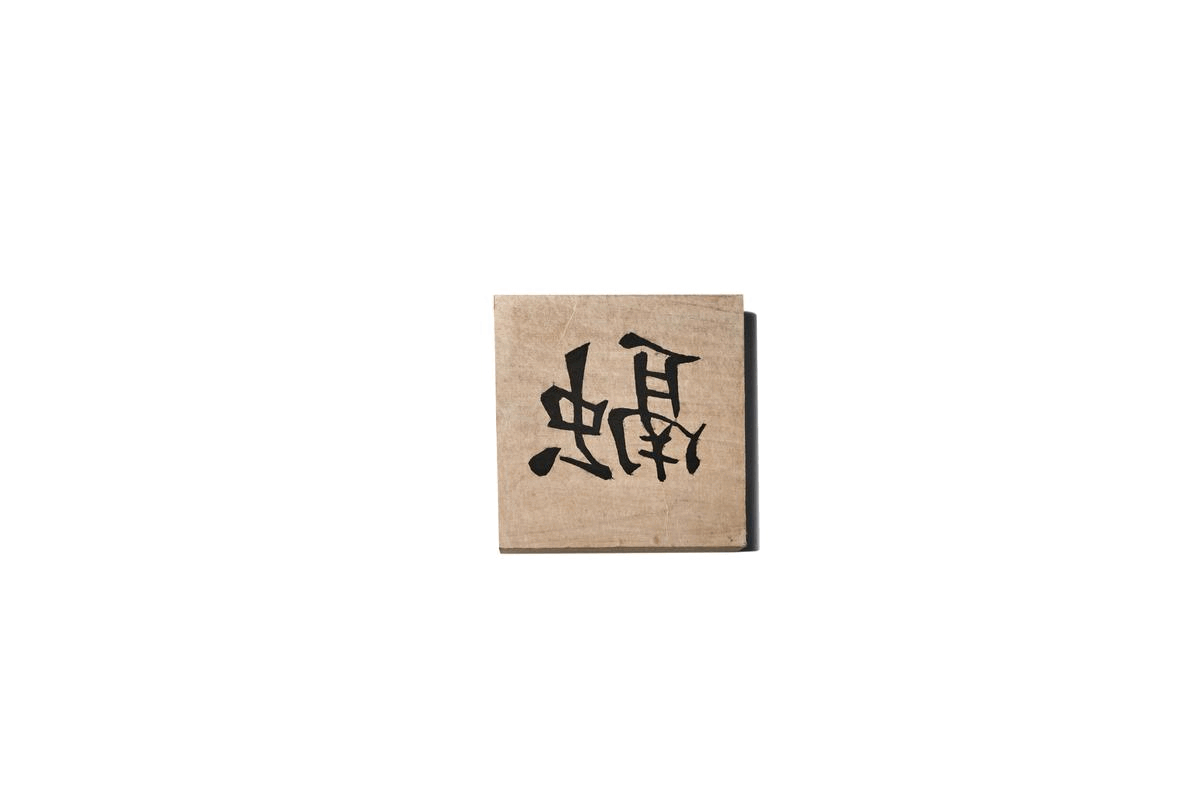
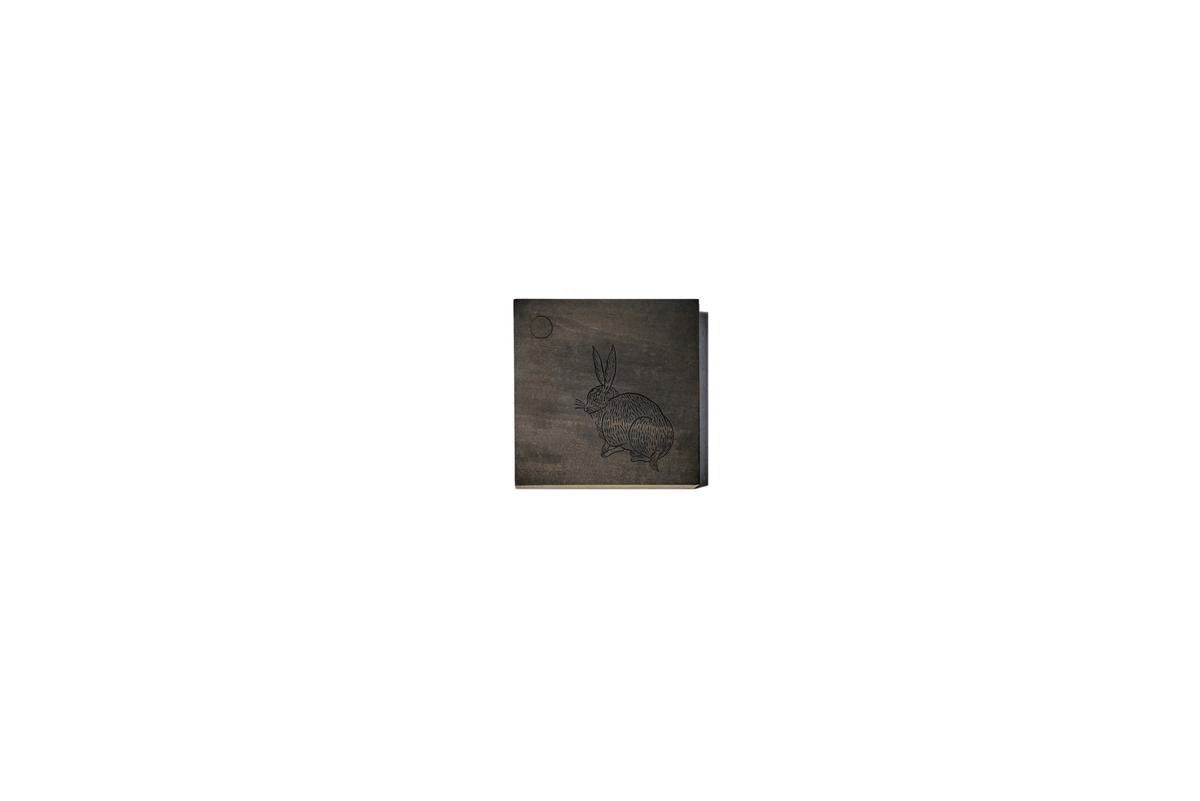
钤印:由石板、陶板为板材,石板制作过程包括石板上样——石板雕刻——钤印;陶板则是在陶坯上样、雕刻后进行烧制,待浸泡处理后即可钤印。
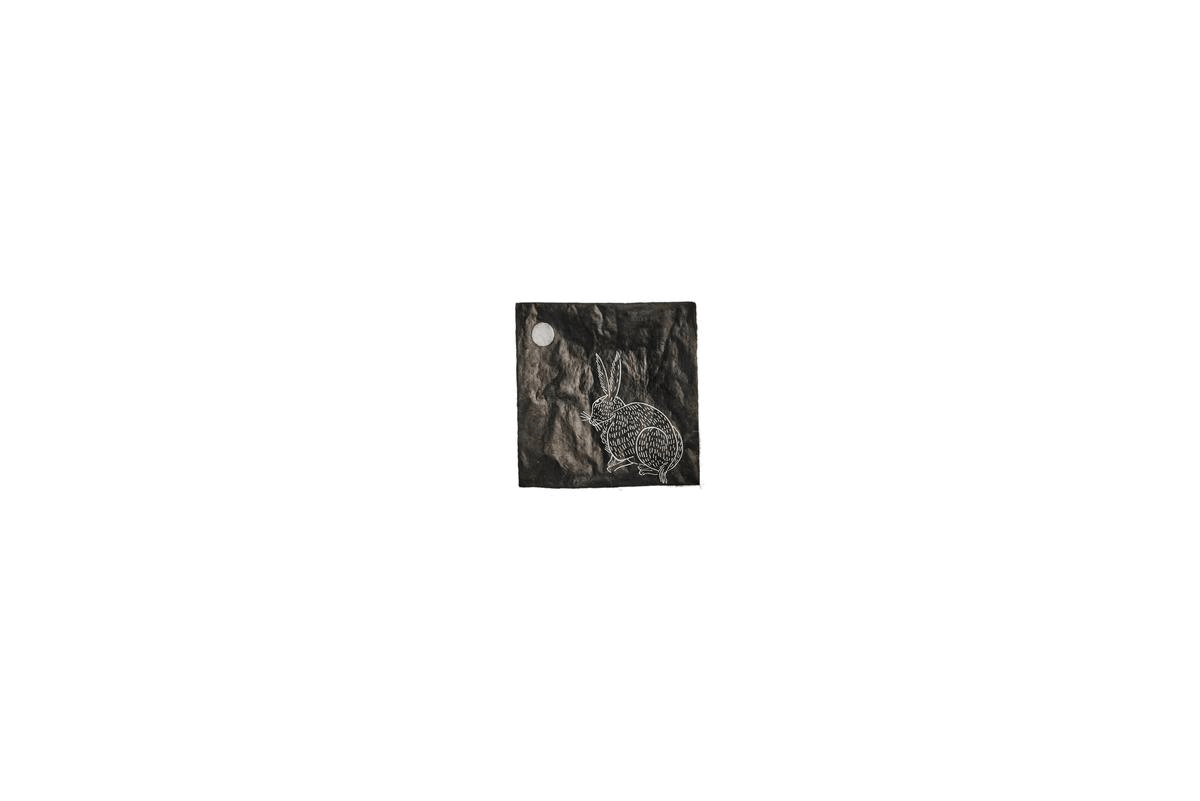
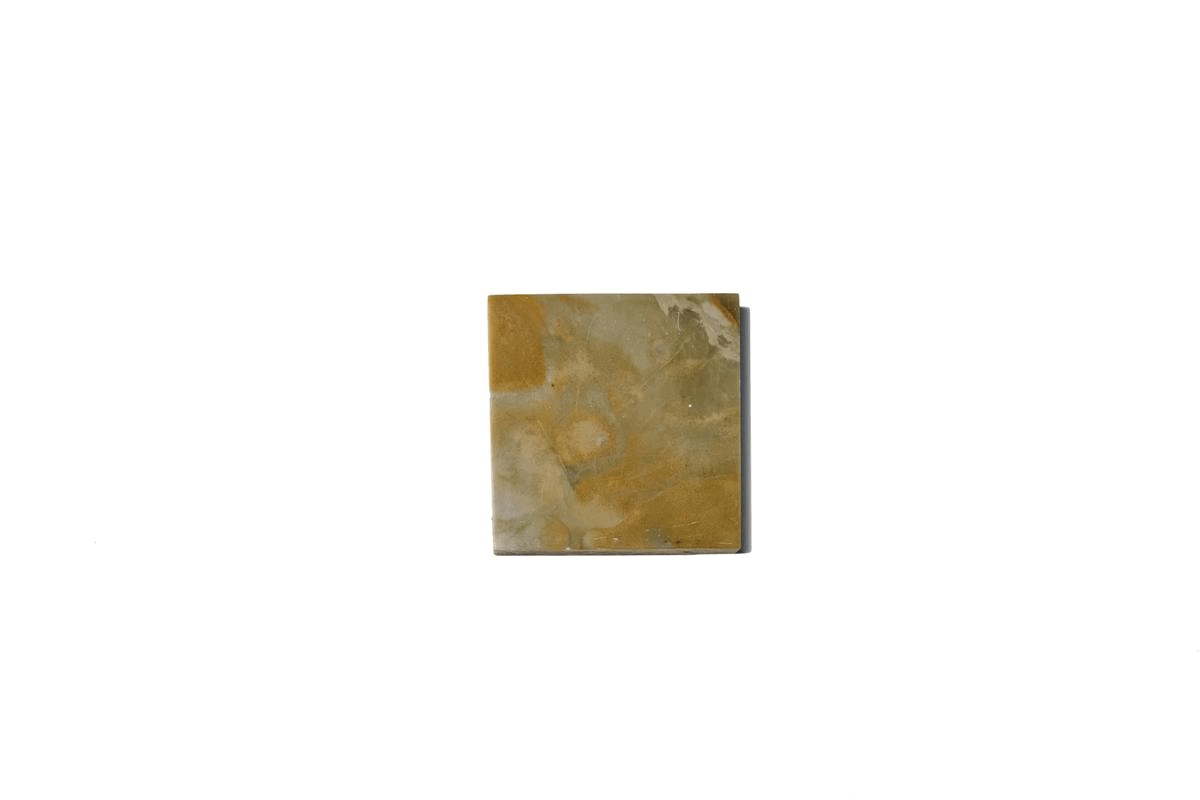
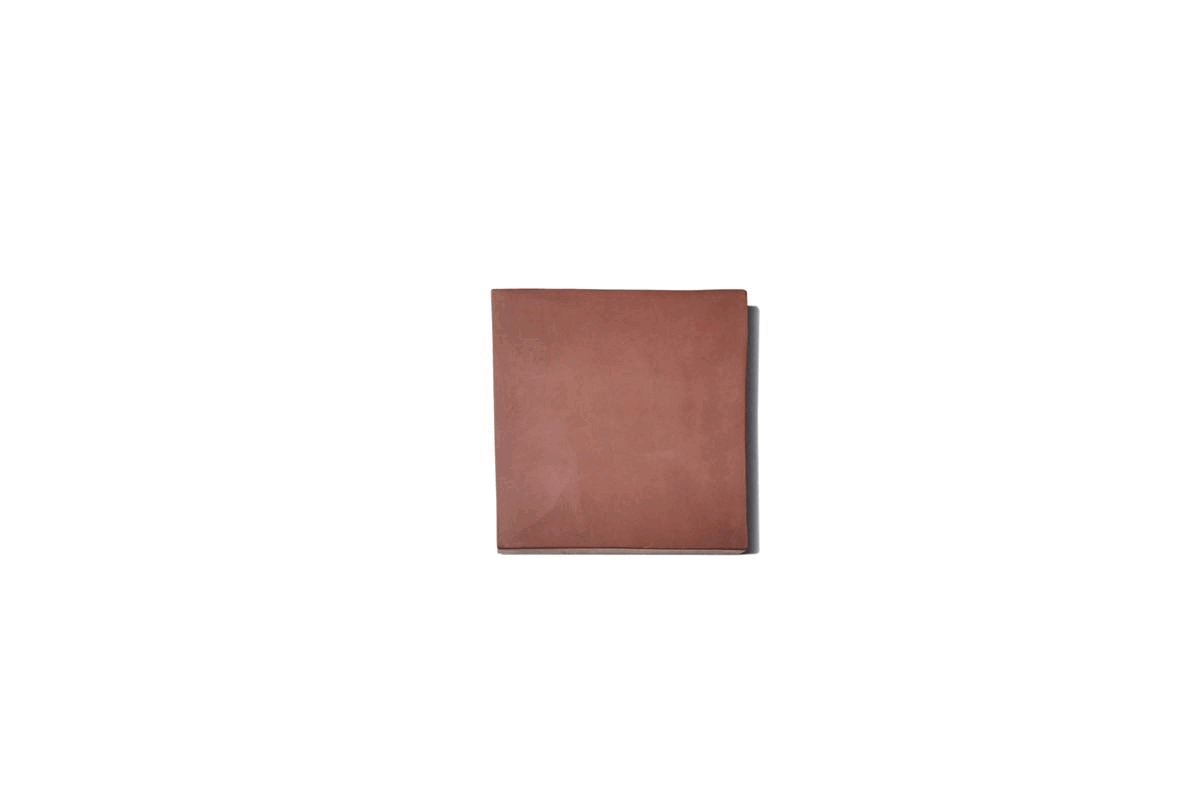
漏印:又称孔版漏印,用纸版镂刻图形制成孔版,其特点是正刻印刷。将布面固定在版面下,在版面喷刷颜色上色、晾晒,即完成漏印。
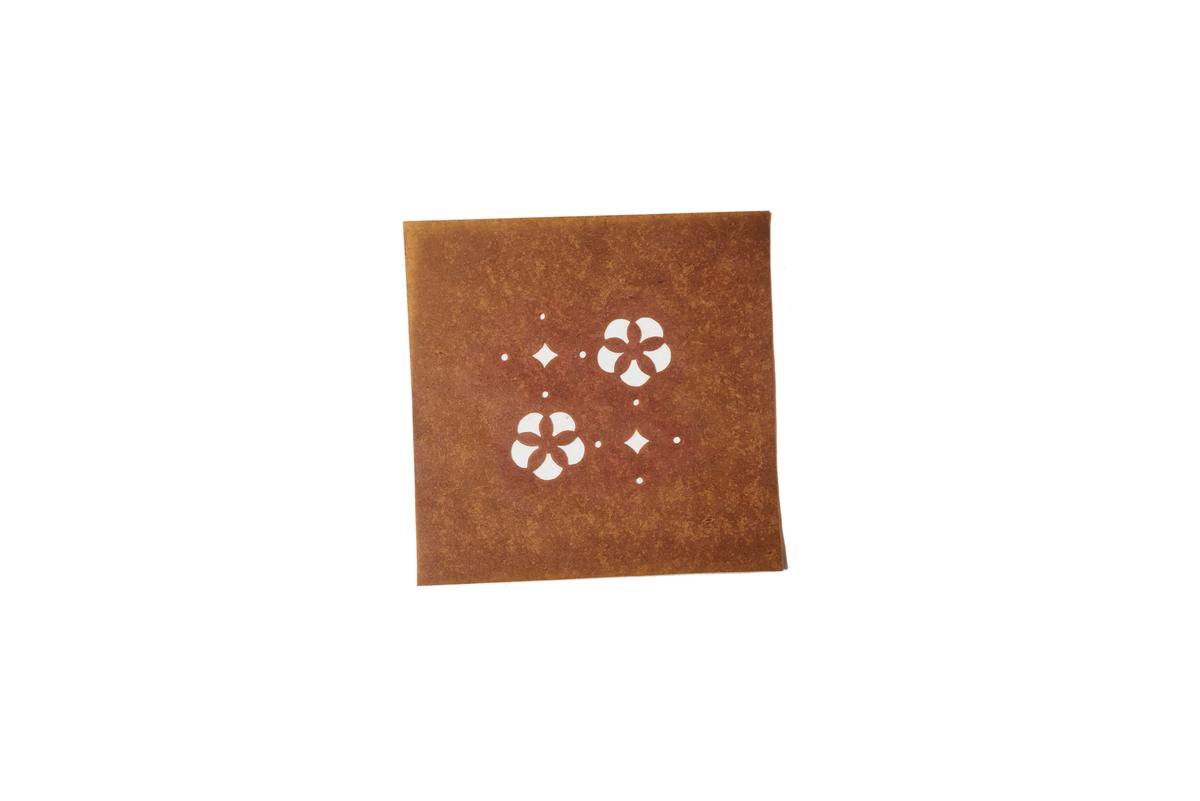
型染:由纸板为板材,制成镂空版,将其覆盖在布面,刷涂由黄豆粉或糯米糊与石灰混合而成的防染剂,晾晒后反复浸染以达到理想效果,最后清理防染剂,即完成印染。
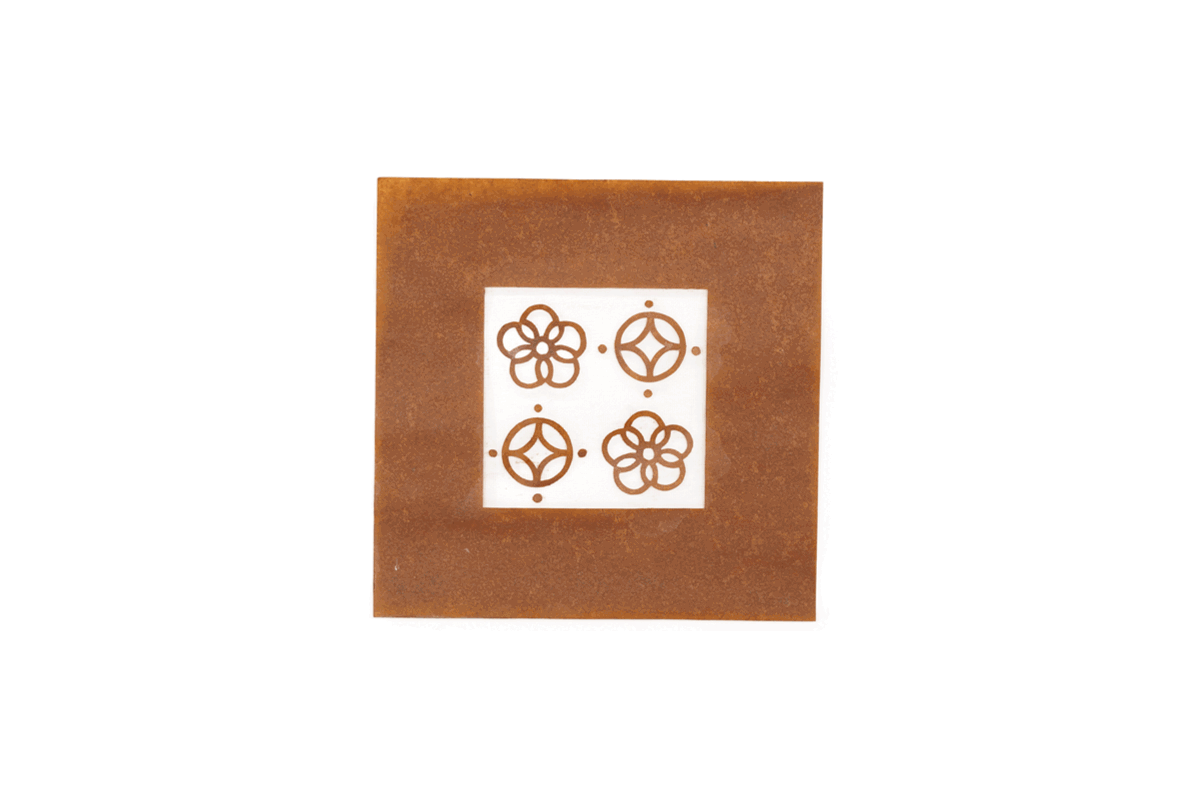
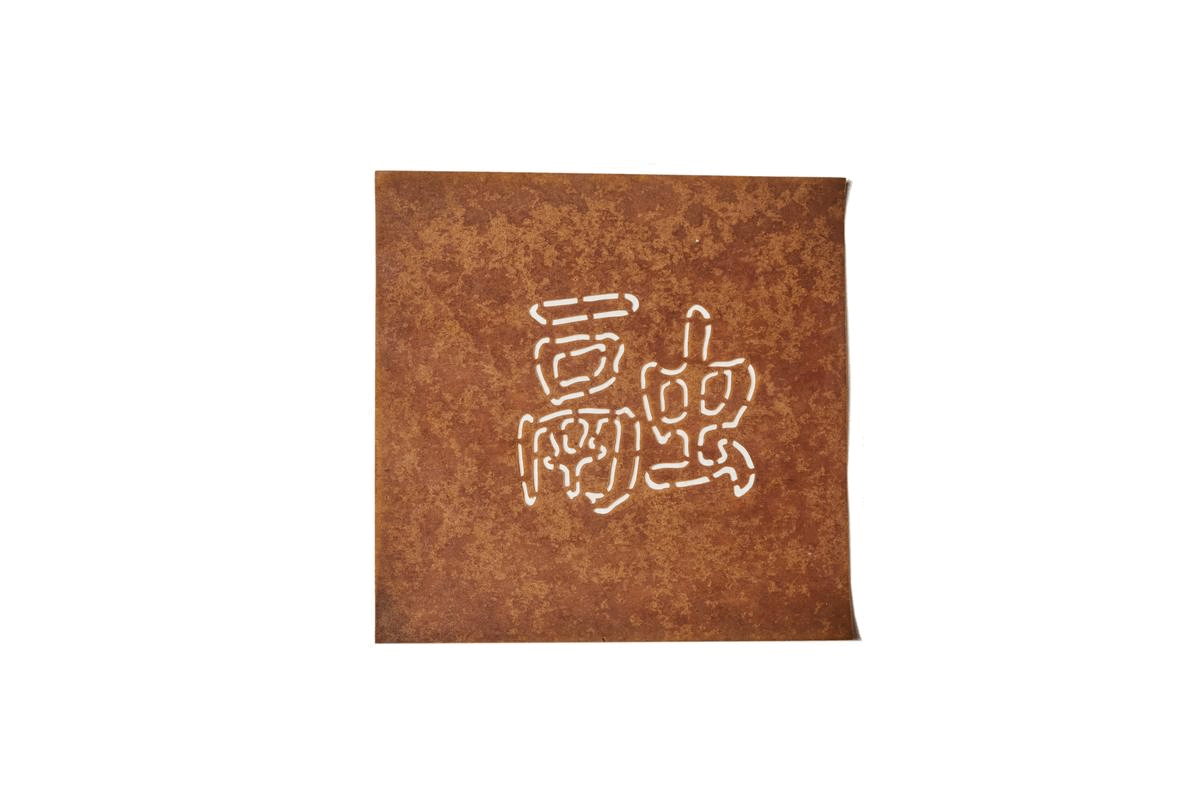
夹染:将布面对折在镂空花版中,使用夹具固定,置于染缸进行多次浸染。染液通过凹进部分进行染色,制成对称的图案,染好后风干、拆除夹具和版面,晾晒后即完成印染。

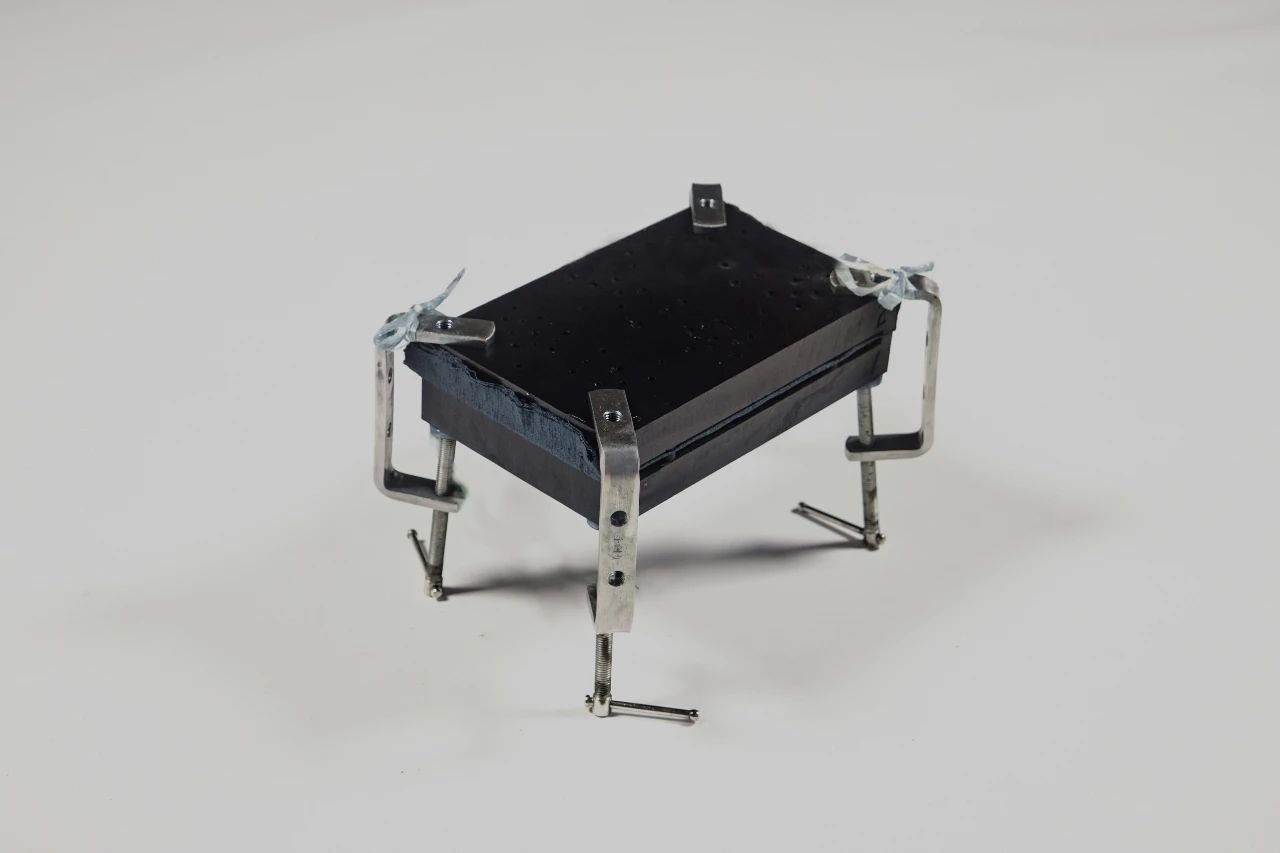
注染:将面料固定于两版中间,用固定件与夹具紧密固定,通过版面的孔洞注入染料的上色技法。待面料上色后隔水进行蒸制,拆除固定件,注染即完成。注染可多次套色,颜色丰富,层次感更强。
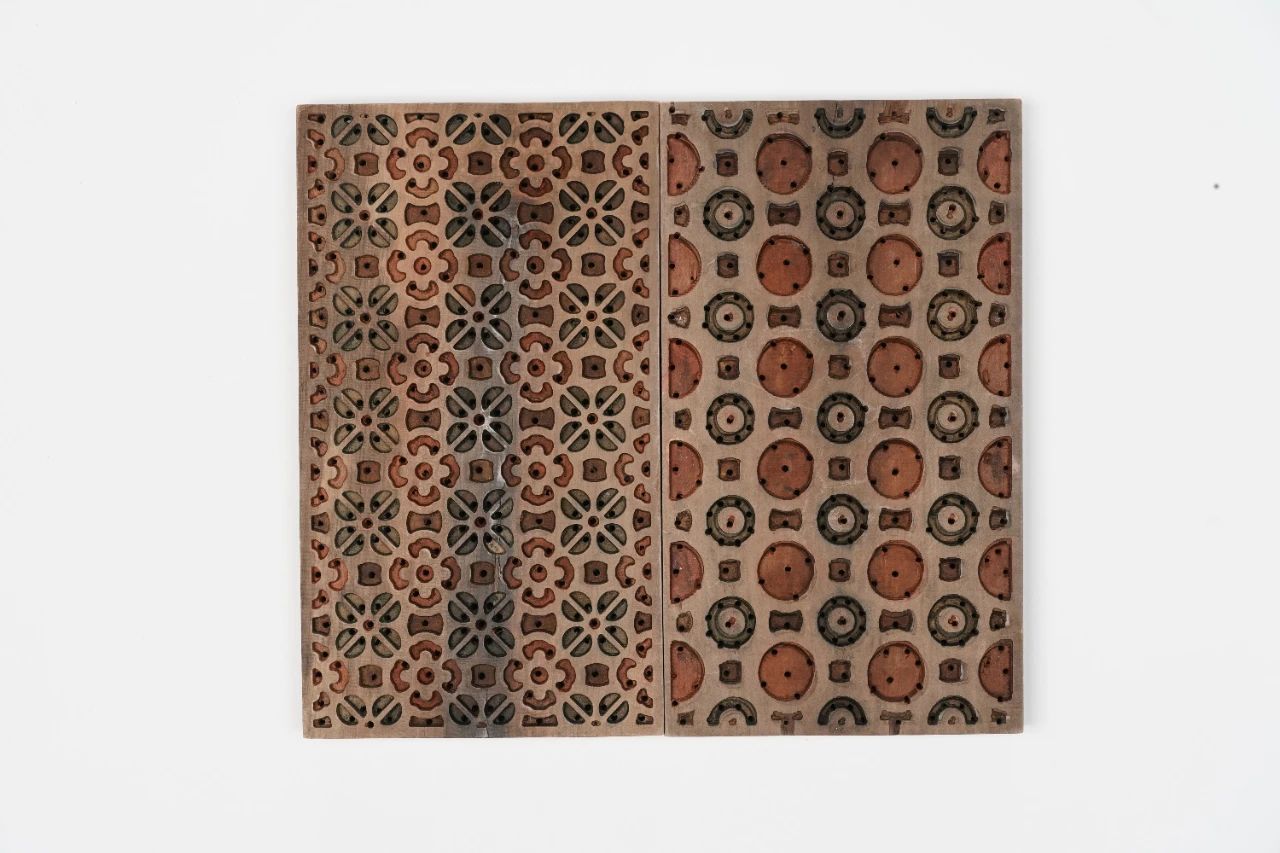
此次通过对雕版的研究,共同探寻传统手工艺之雕版在当代设计中的更多可能性。
2023中国传统手工艺材料之木材料-雕版研究成果展
2023 Exhibition of Wood Materials and Engraving Research Achievements of Traditional Chinese Handicraft Materials
展览时间 Exhibition time
2023.5.20-6.20
展览地点 Exhibition venue
杭州市余杭区青山村融设计图书馆
Rong Design Library, Qingshan Village, Yuhang District, Hangzhou

